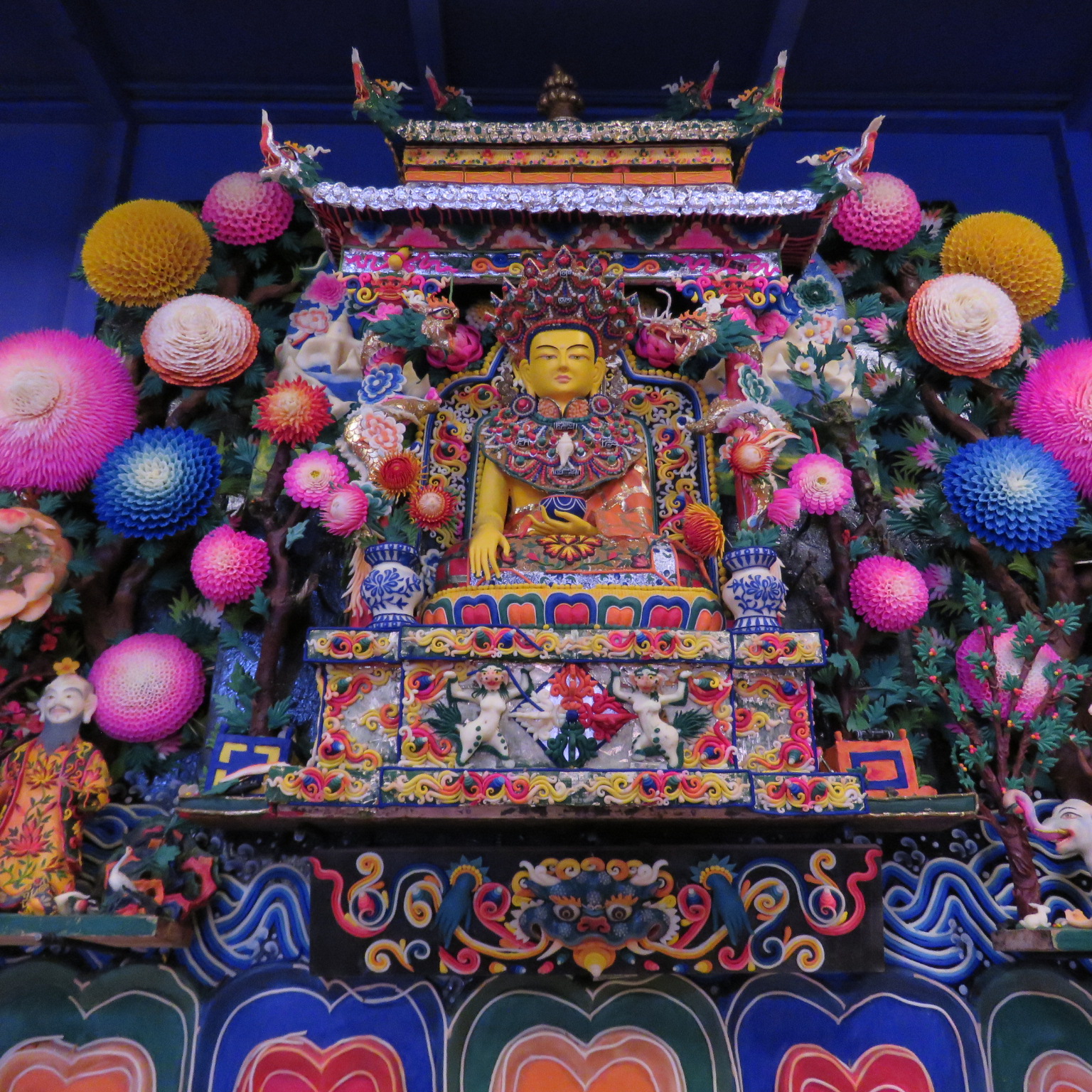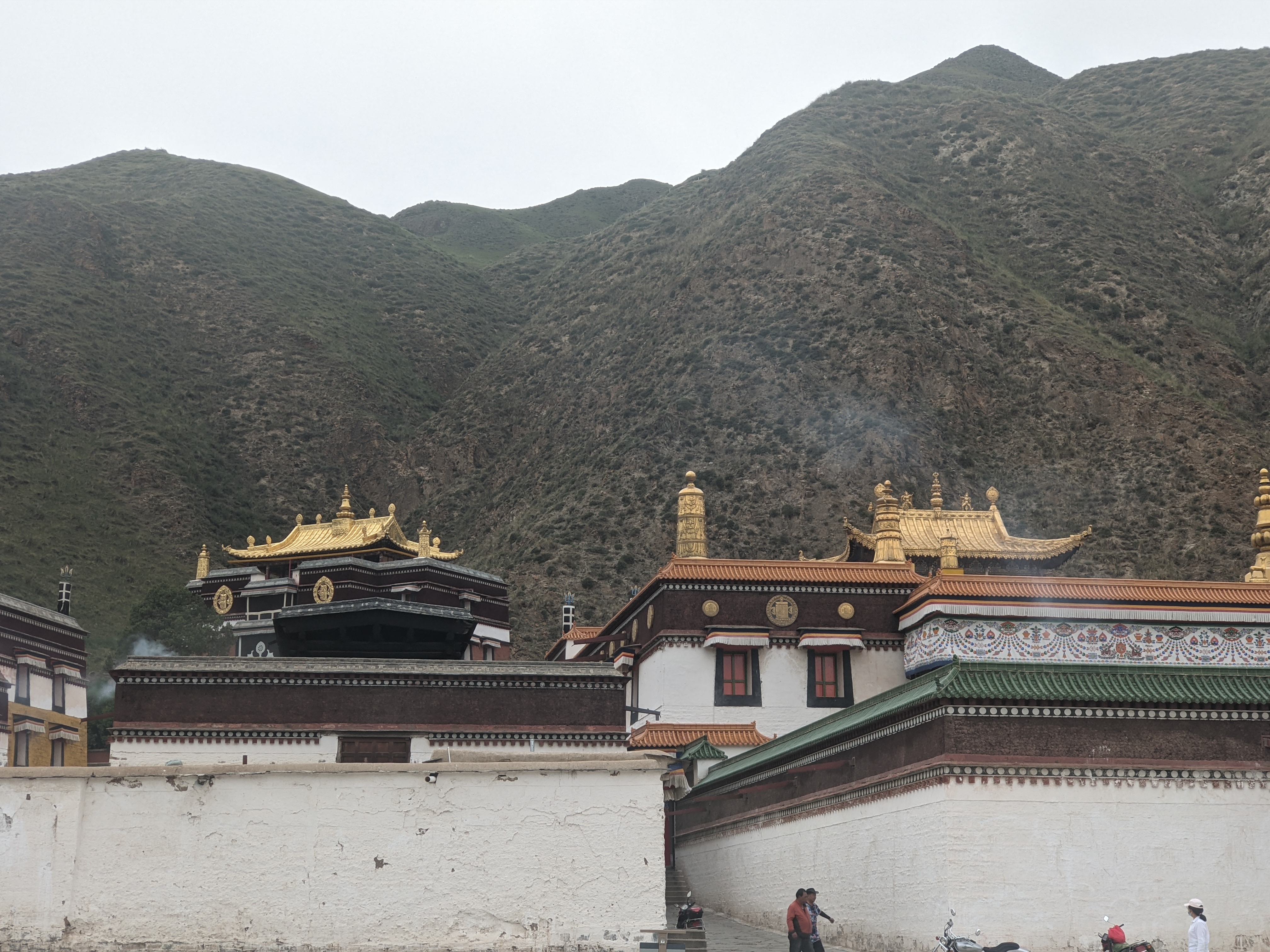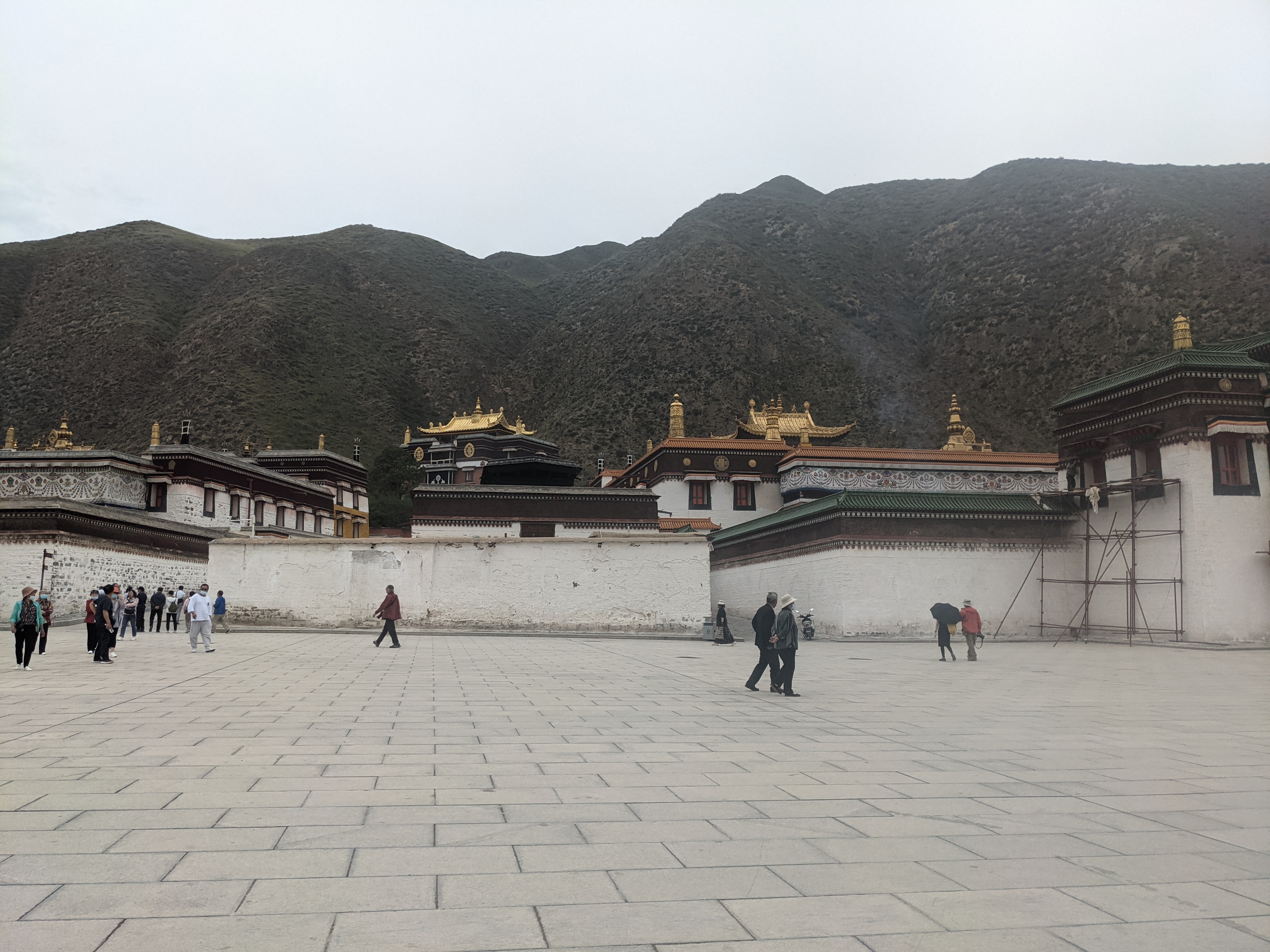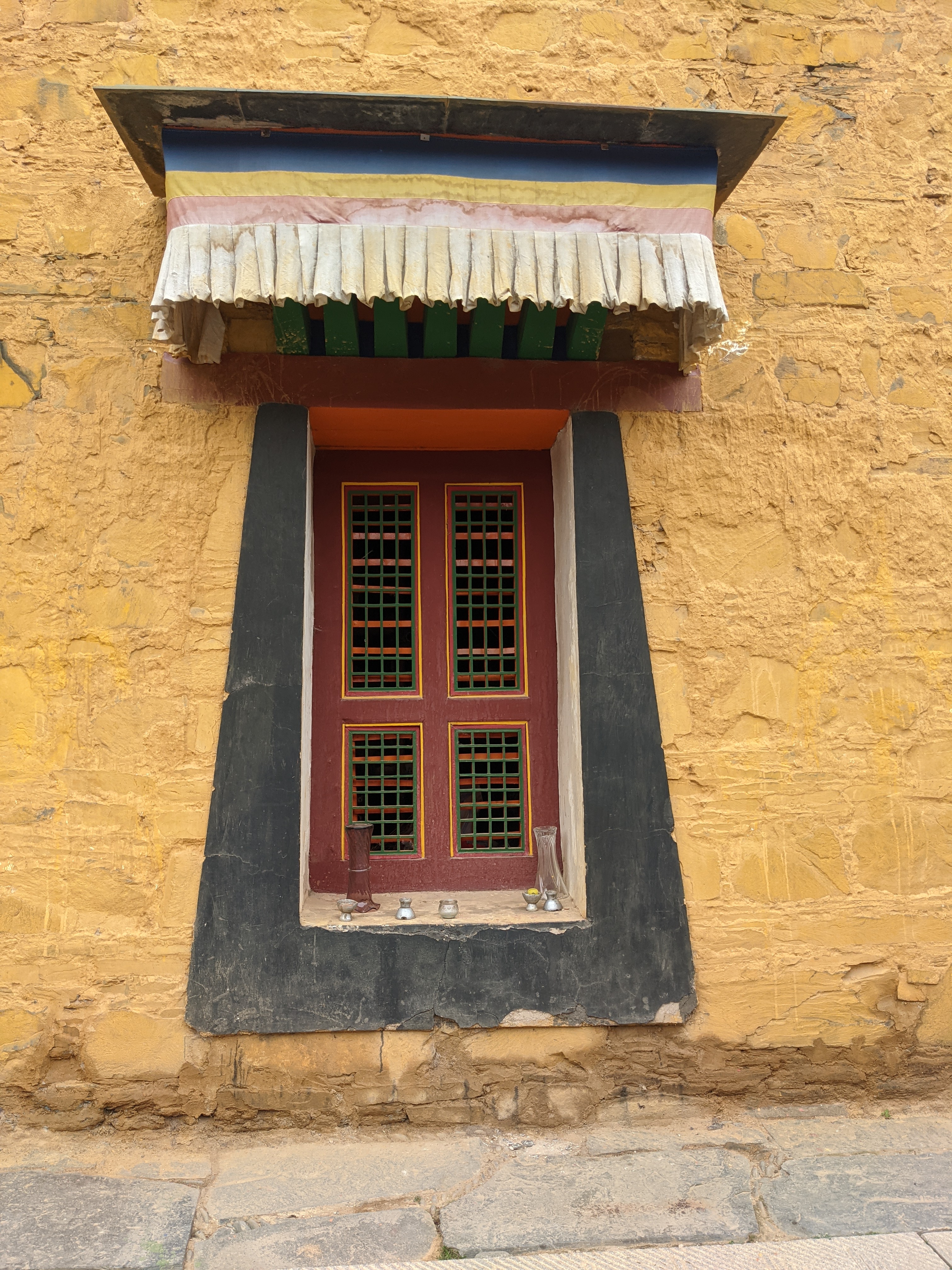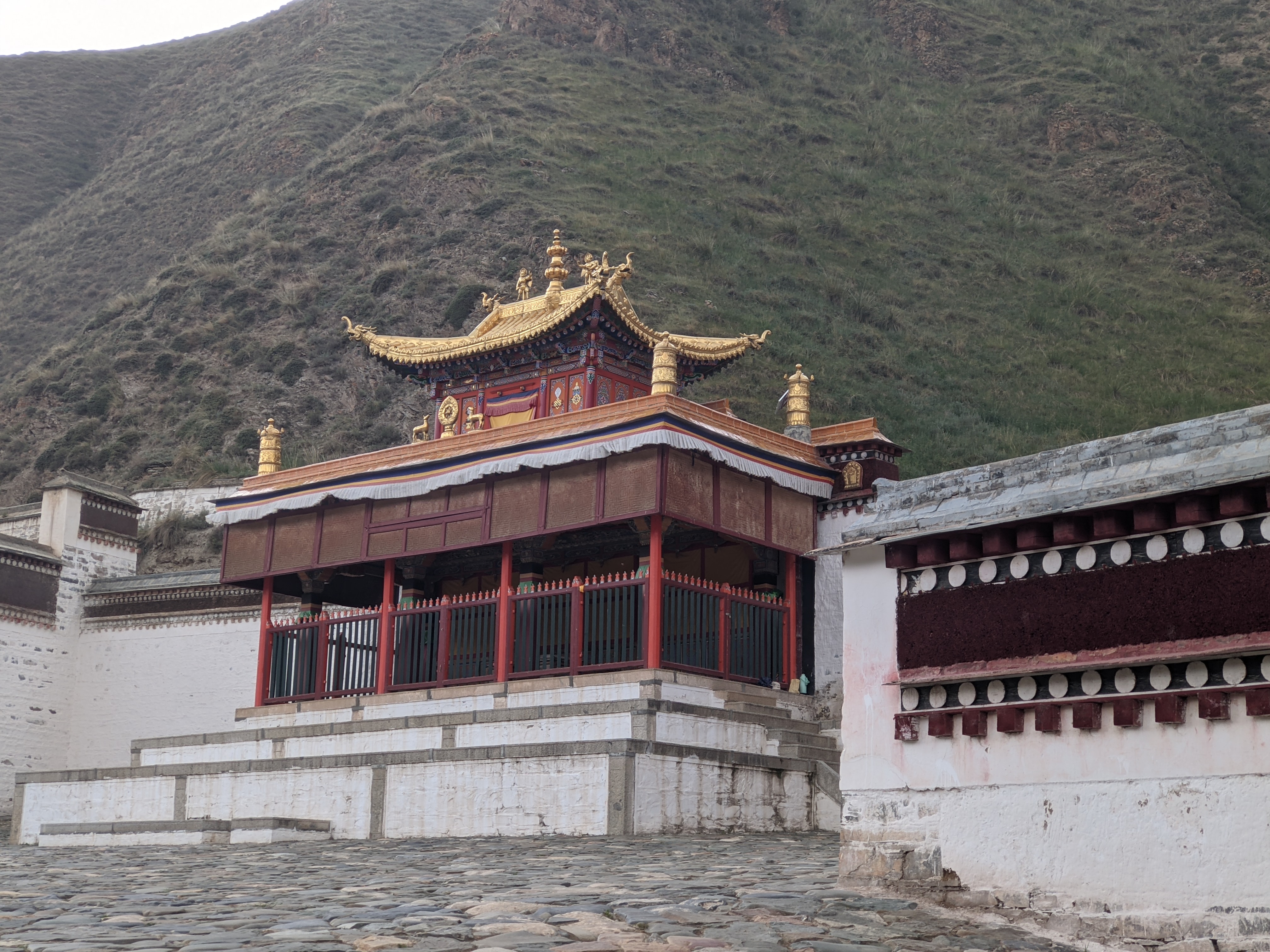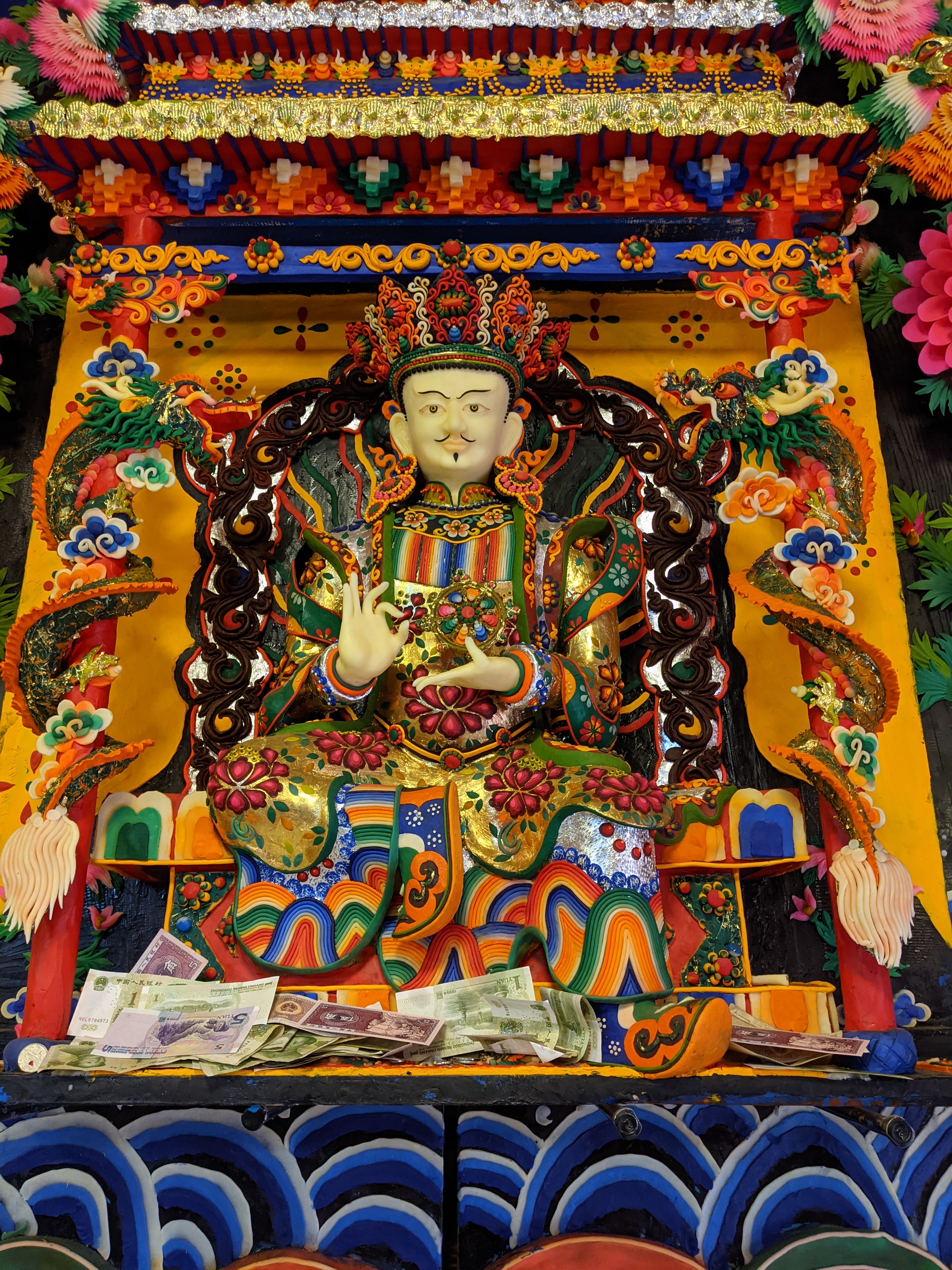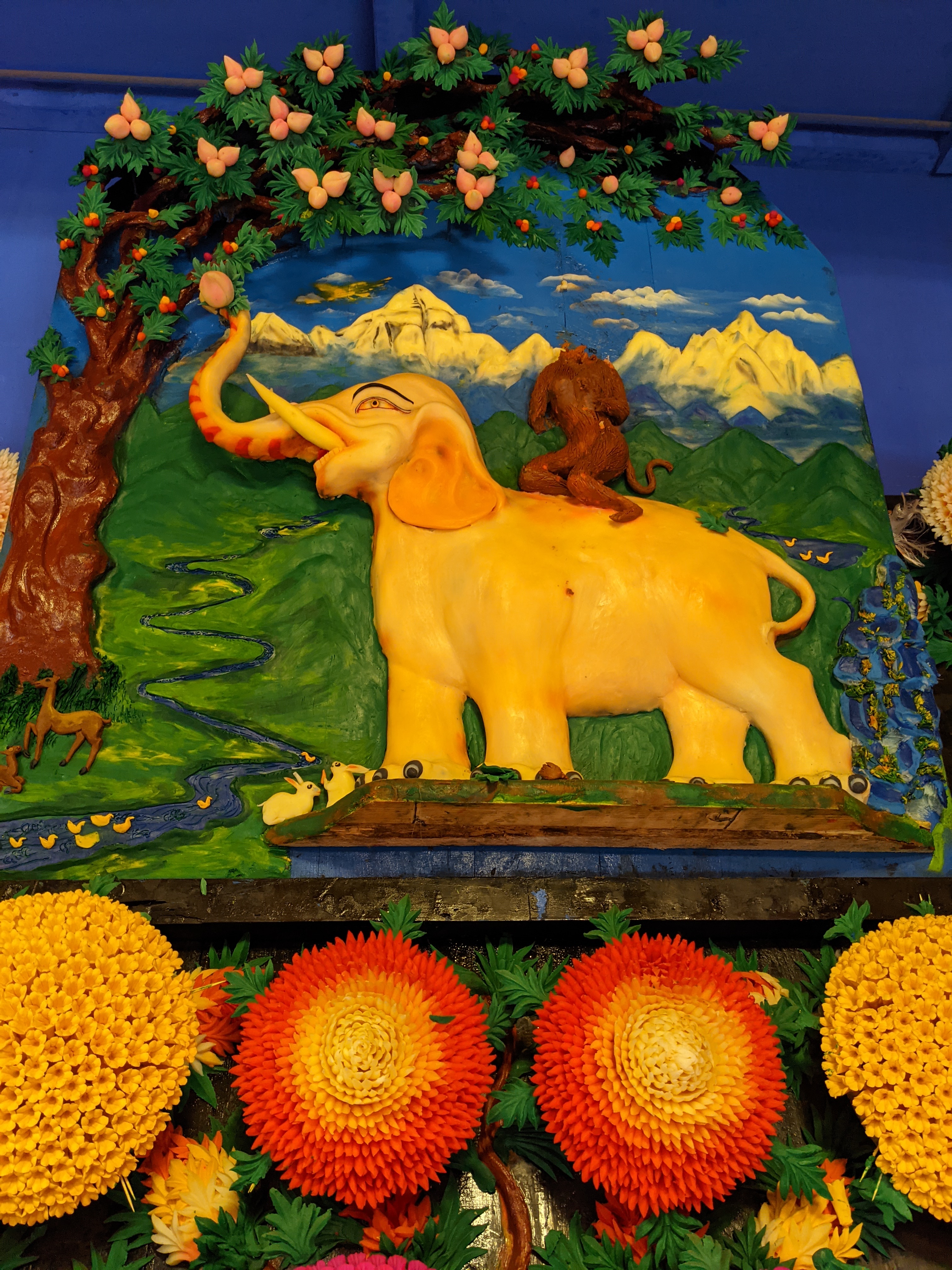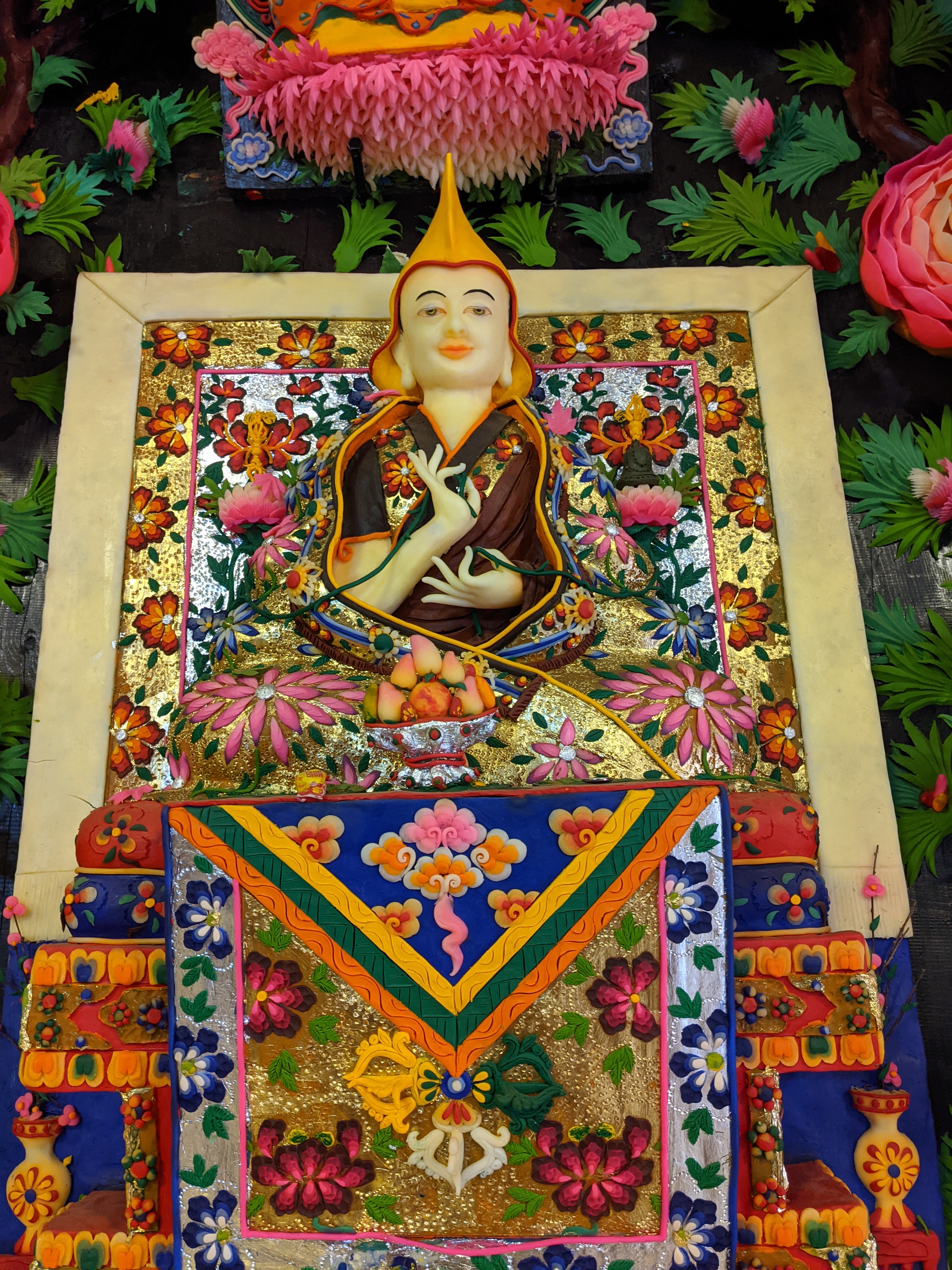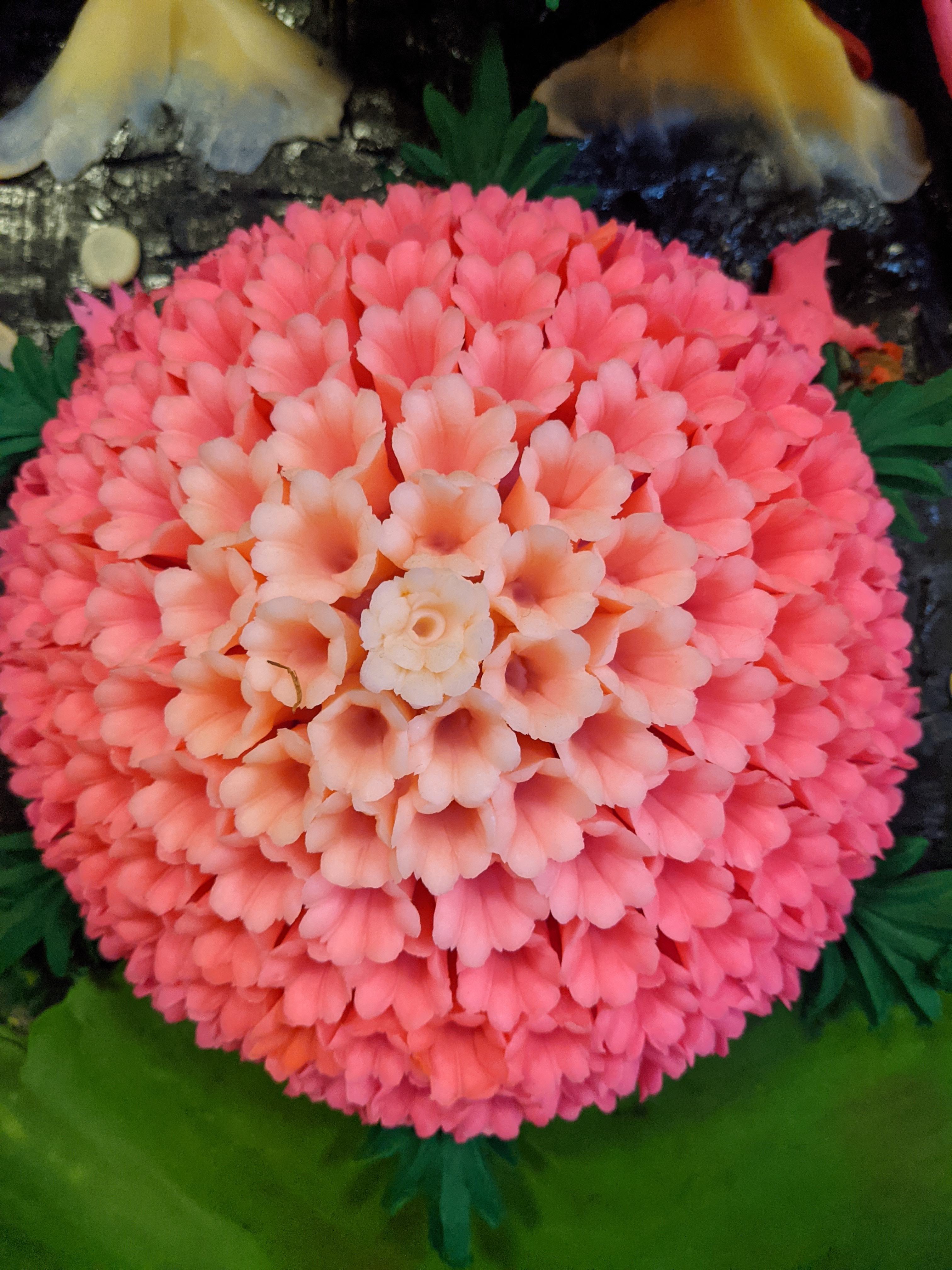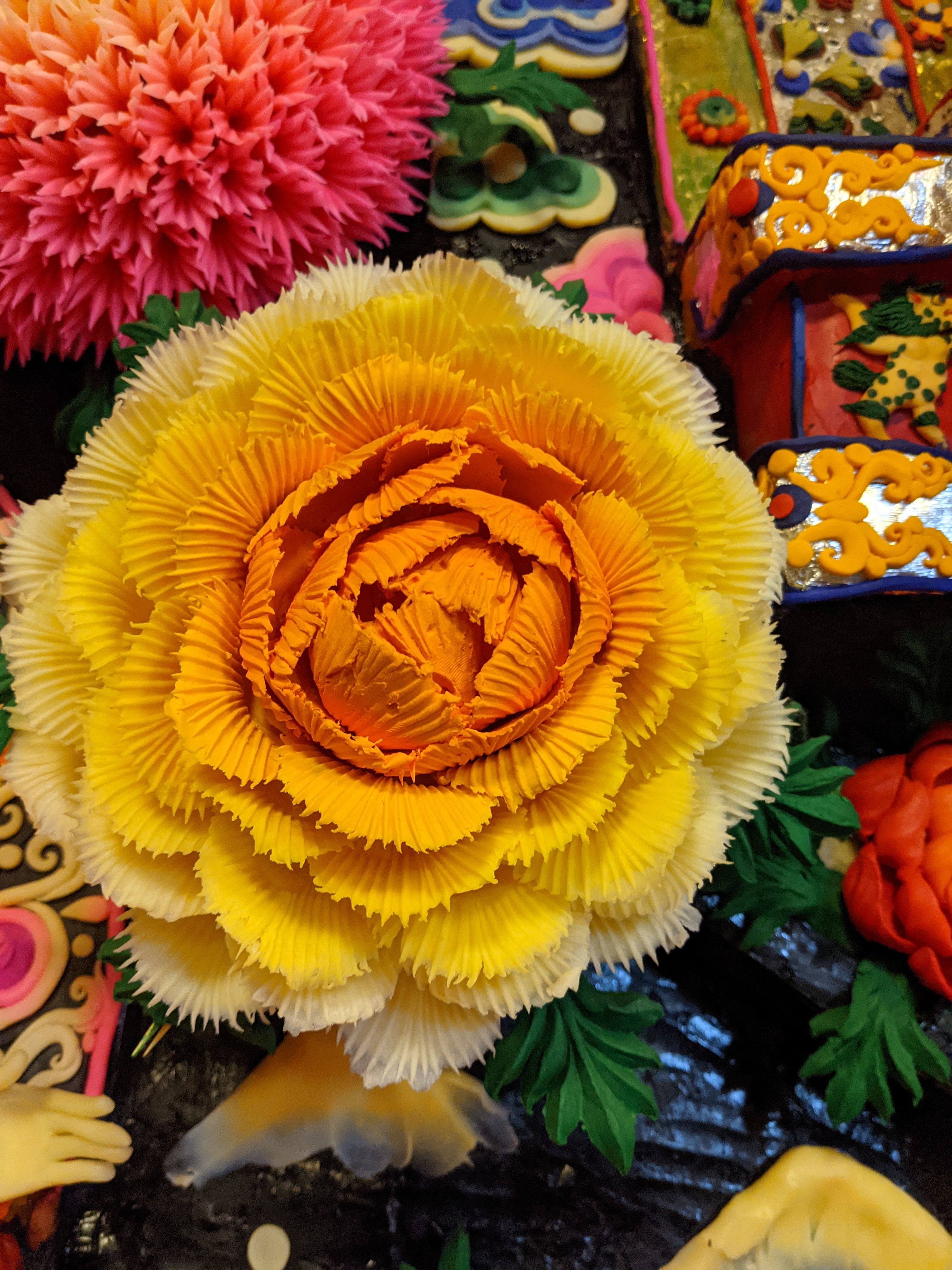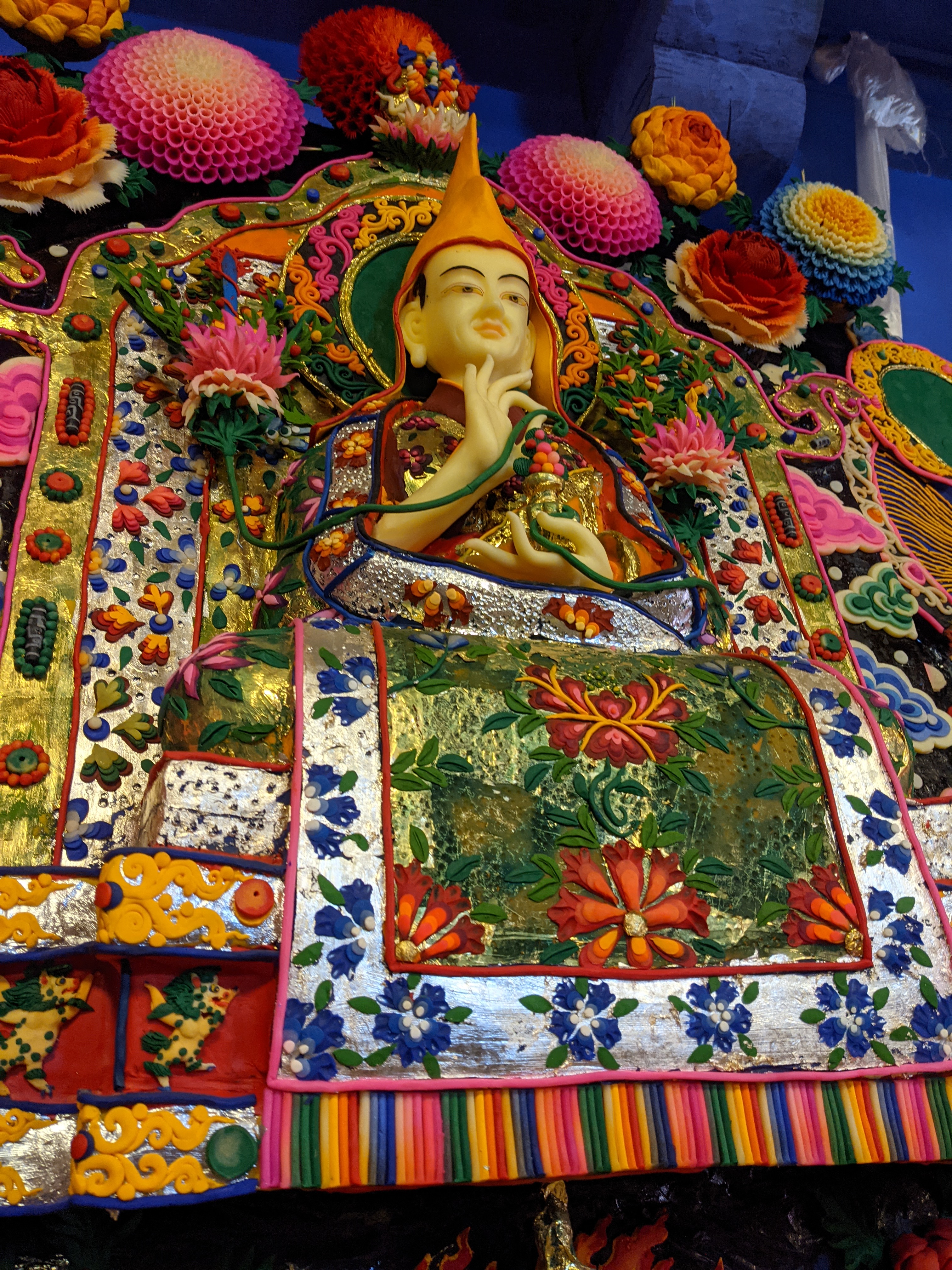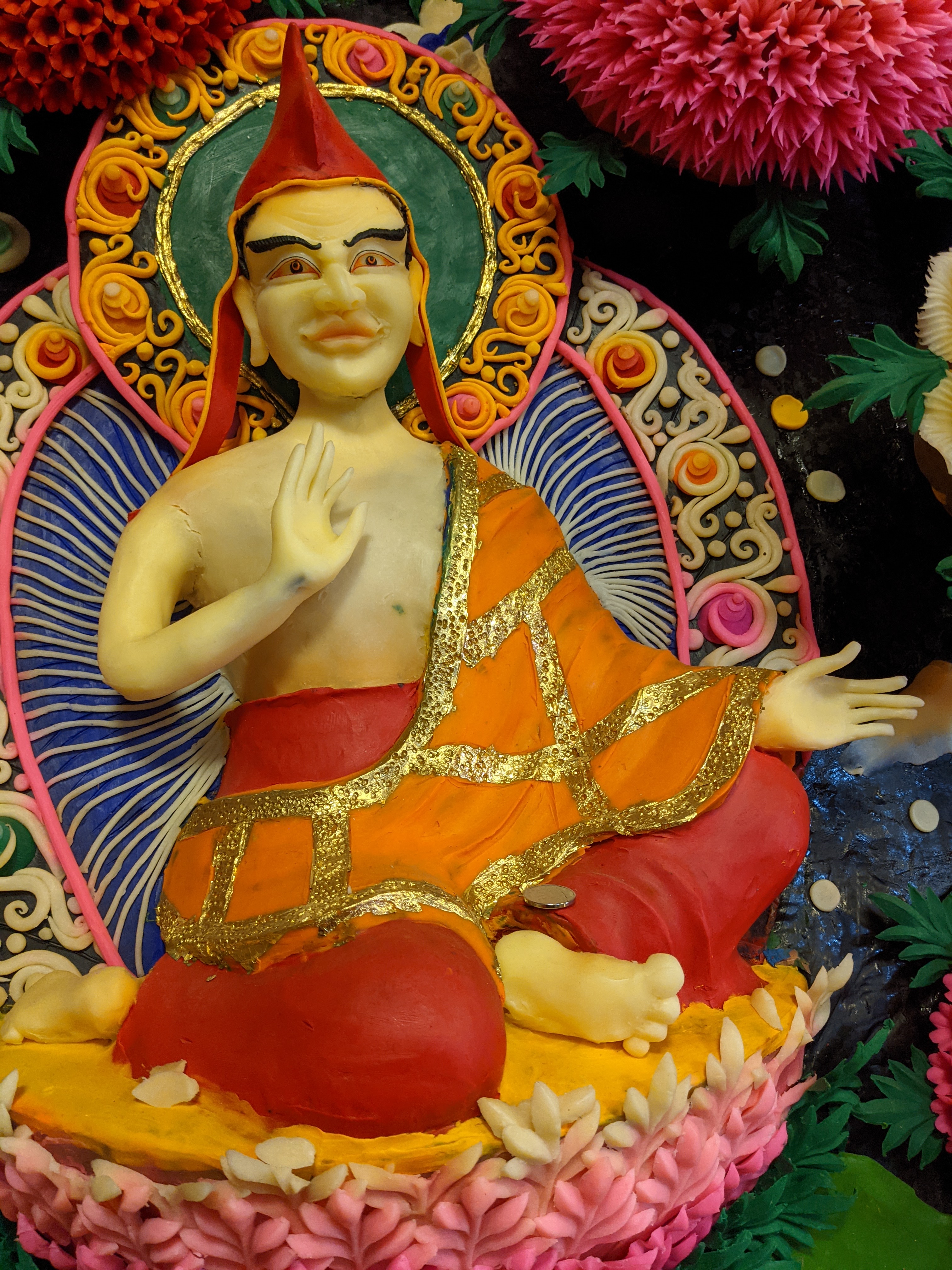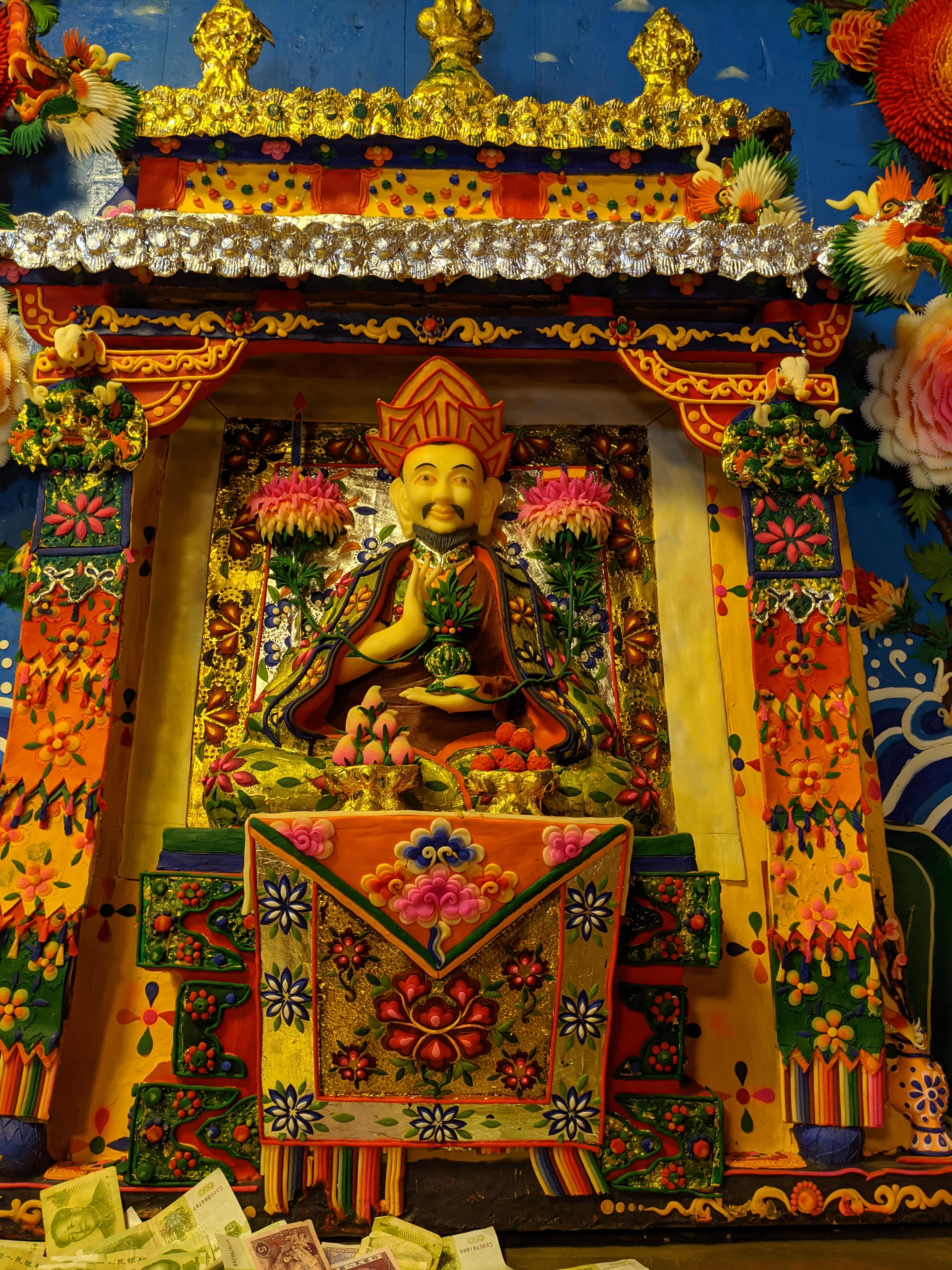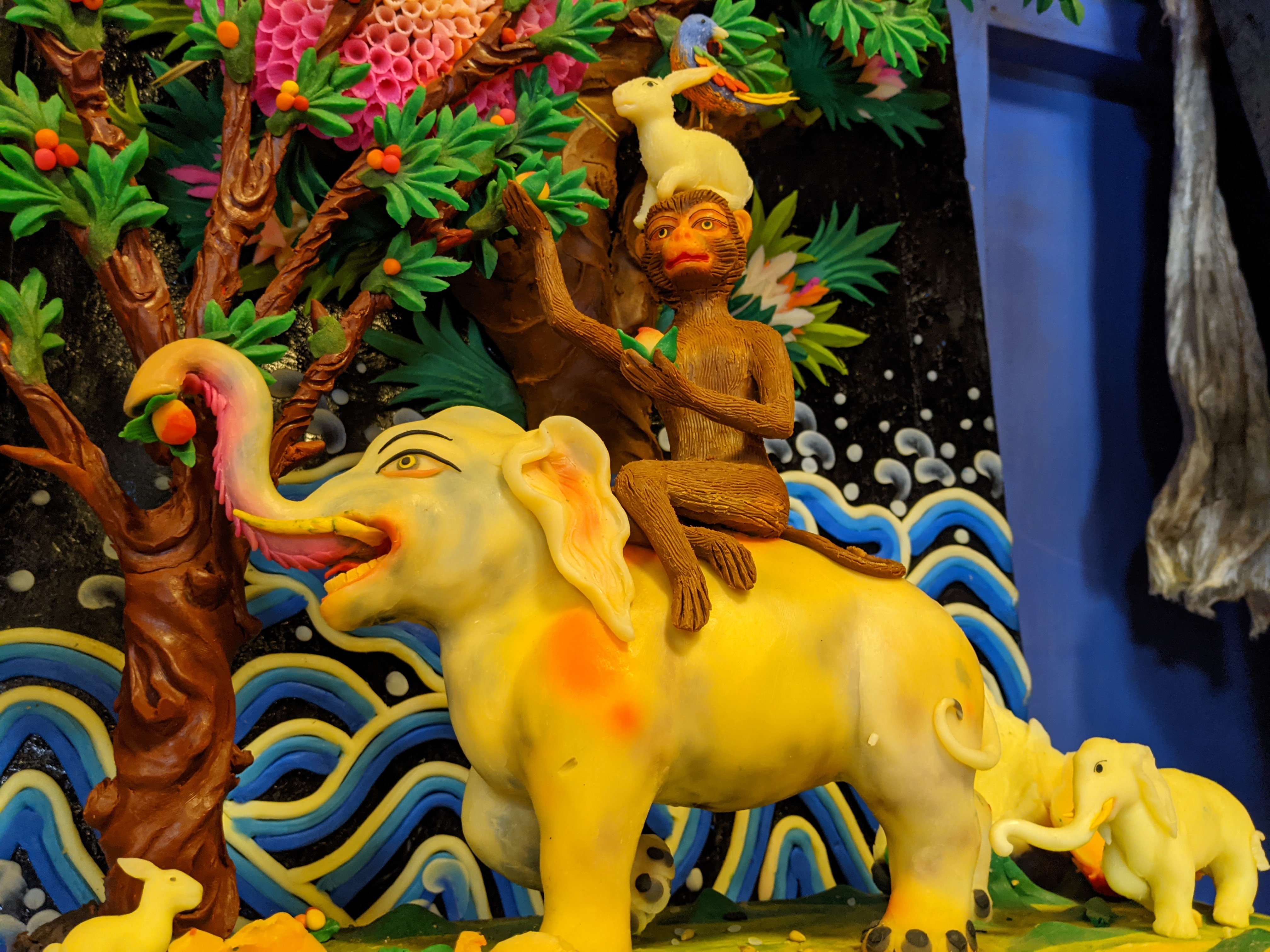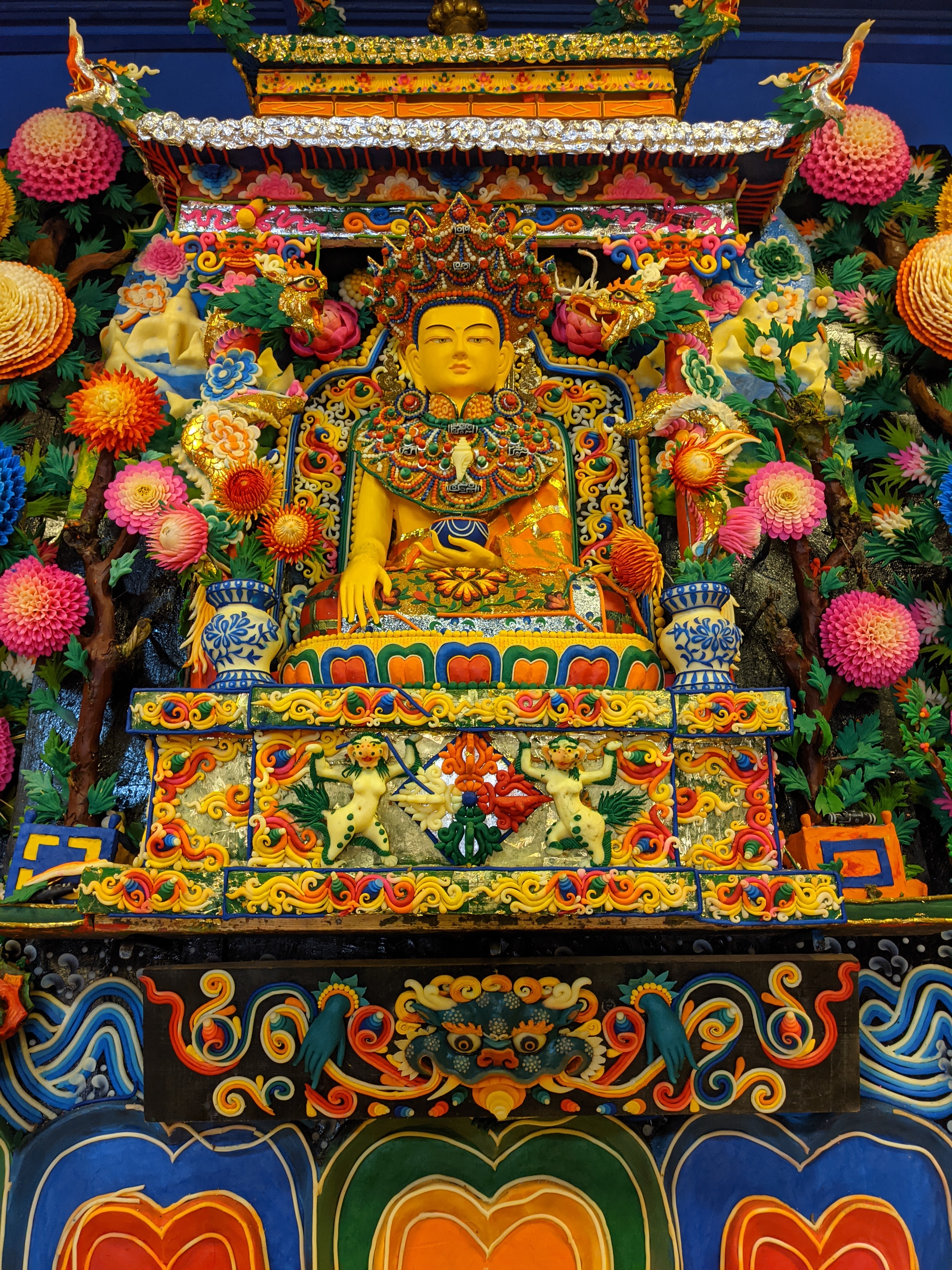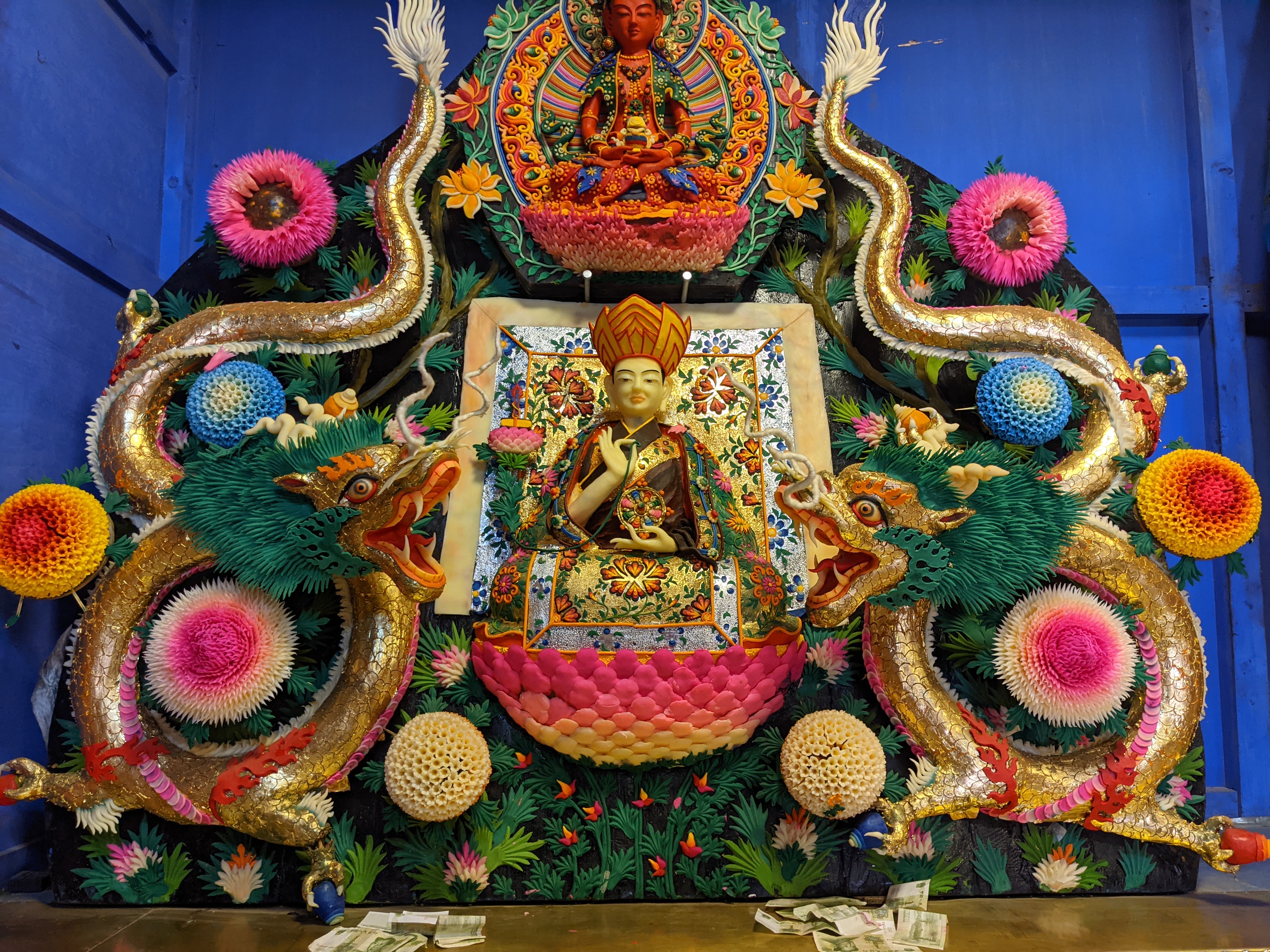After Linxia, our next stop was Xiahe County, where we visited Labrang Monestary and the town with the same name. Dave and I had very much wanted to visit Labrang during our October Holiday, but it hadn’t worked out, so we were happy when the rest of our Summer Holiday gang were also keen to see the area.
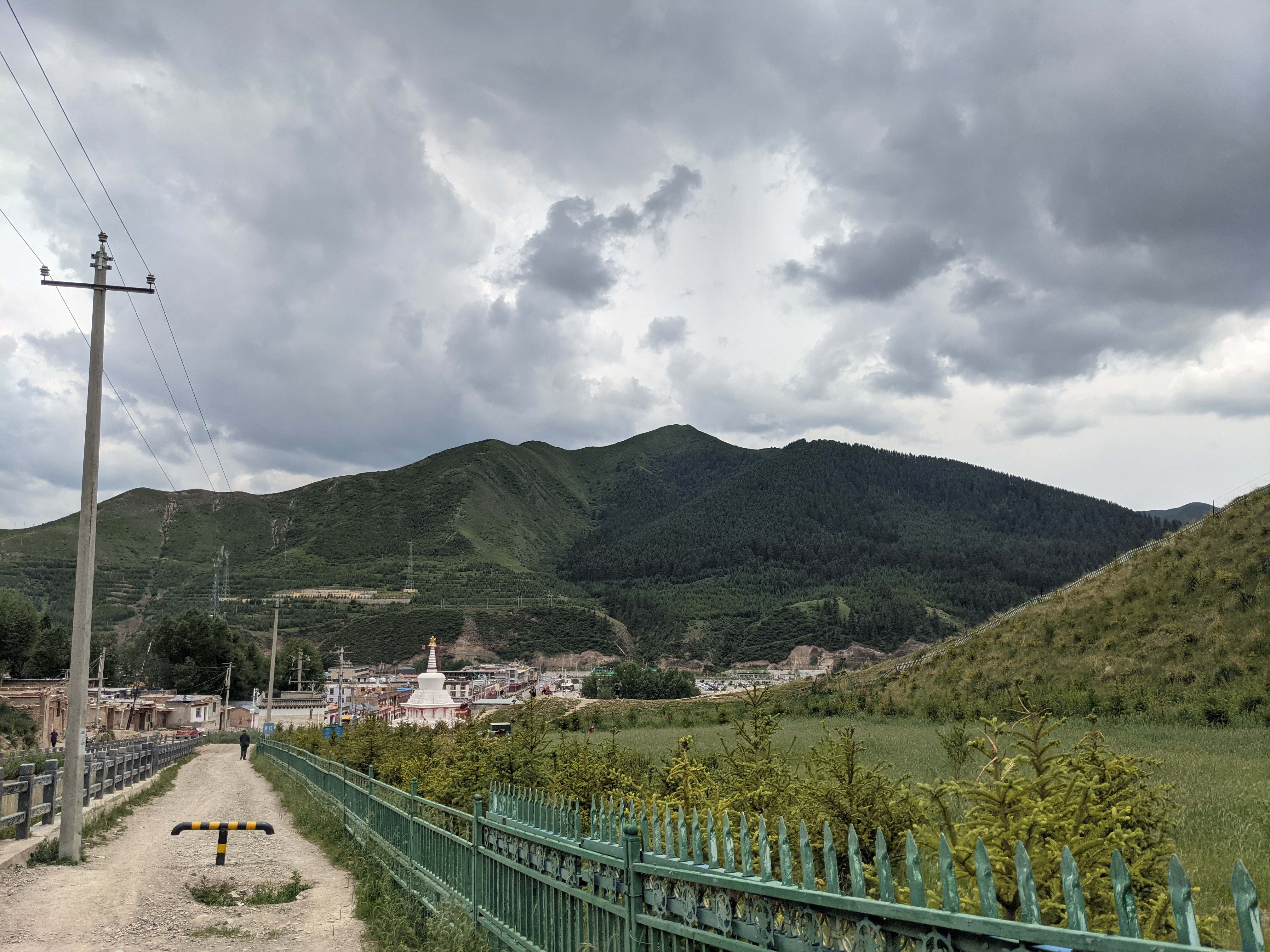
We had a day and a half in Labrang Town, which was enough for us to see most of what we wanted to see. The main sight to see there is the monestary. Still, we did do a little walking around the town. It’s a neat little place!
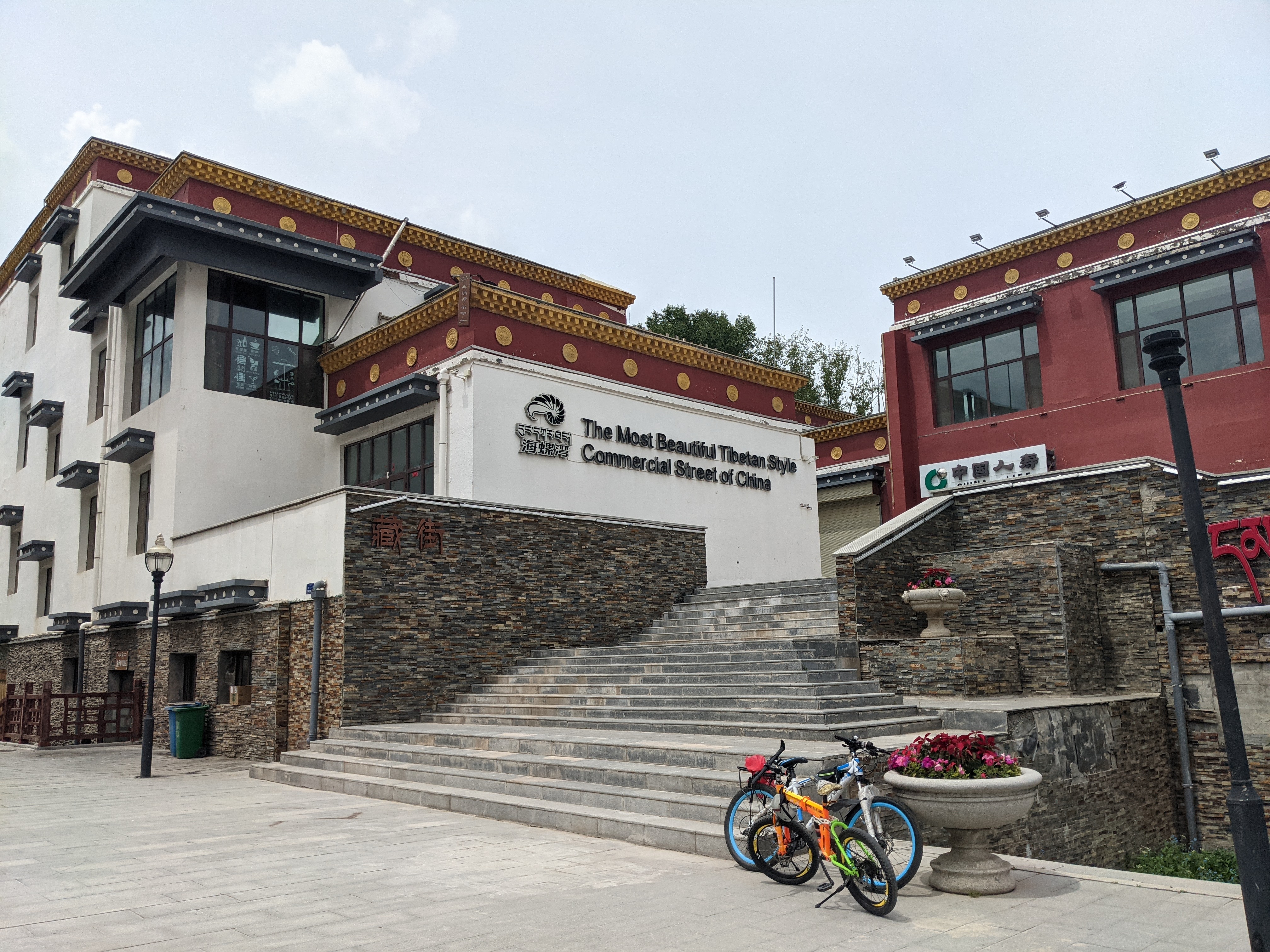
This was not true…. 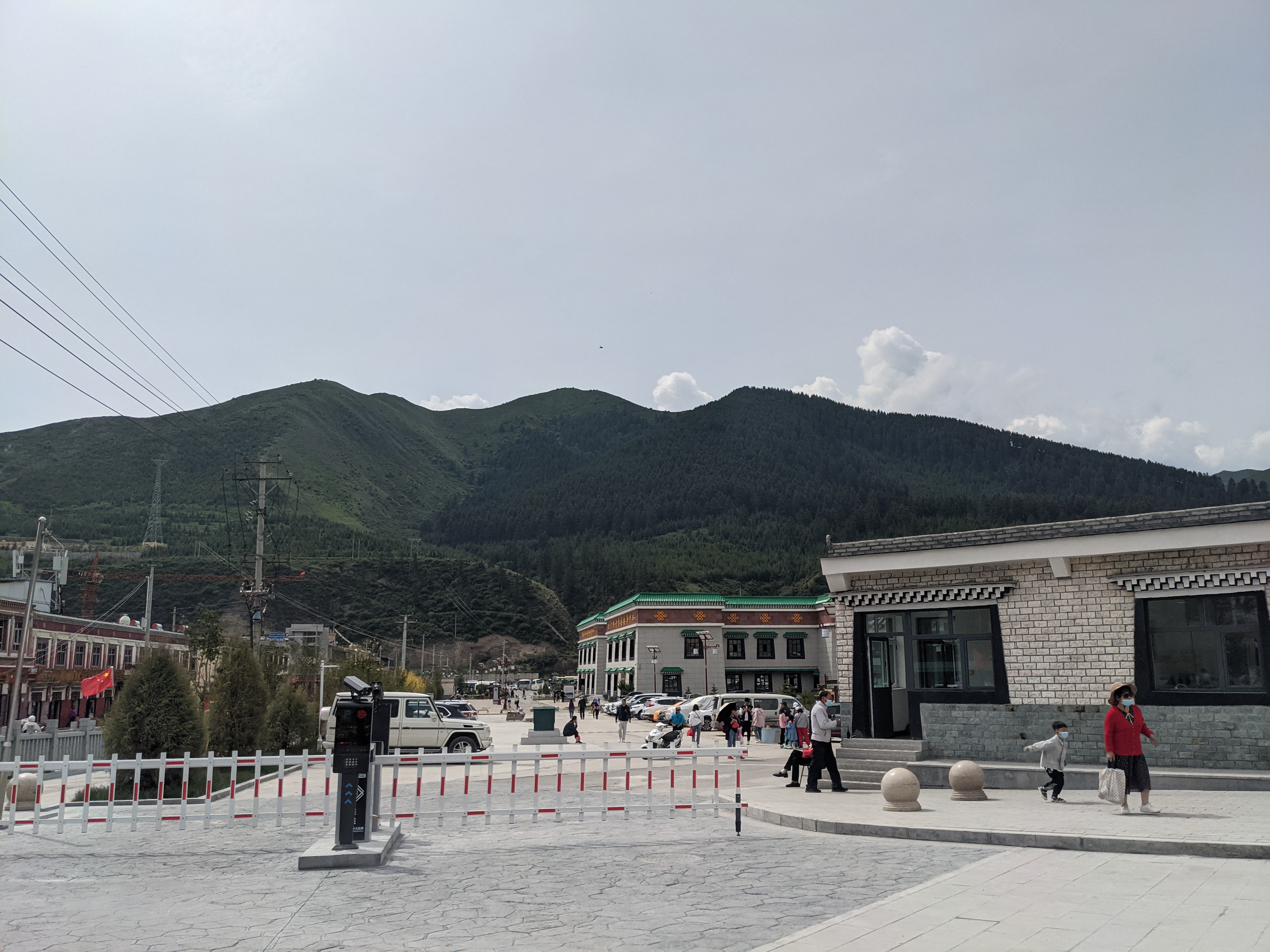
The town is surrounded by beautiful mountains 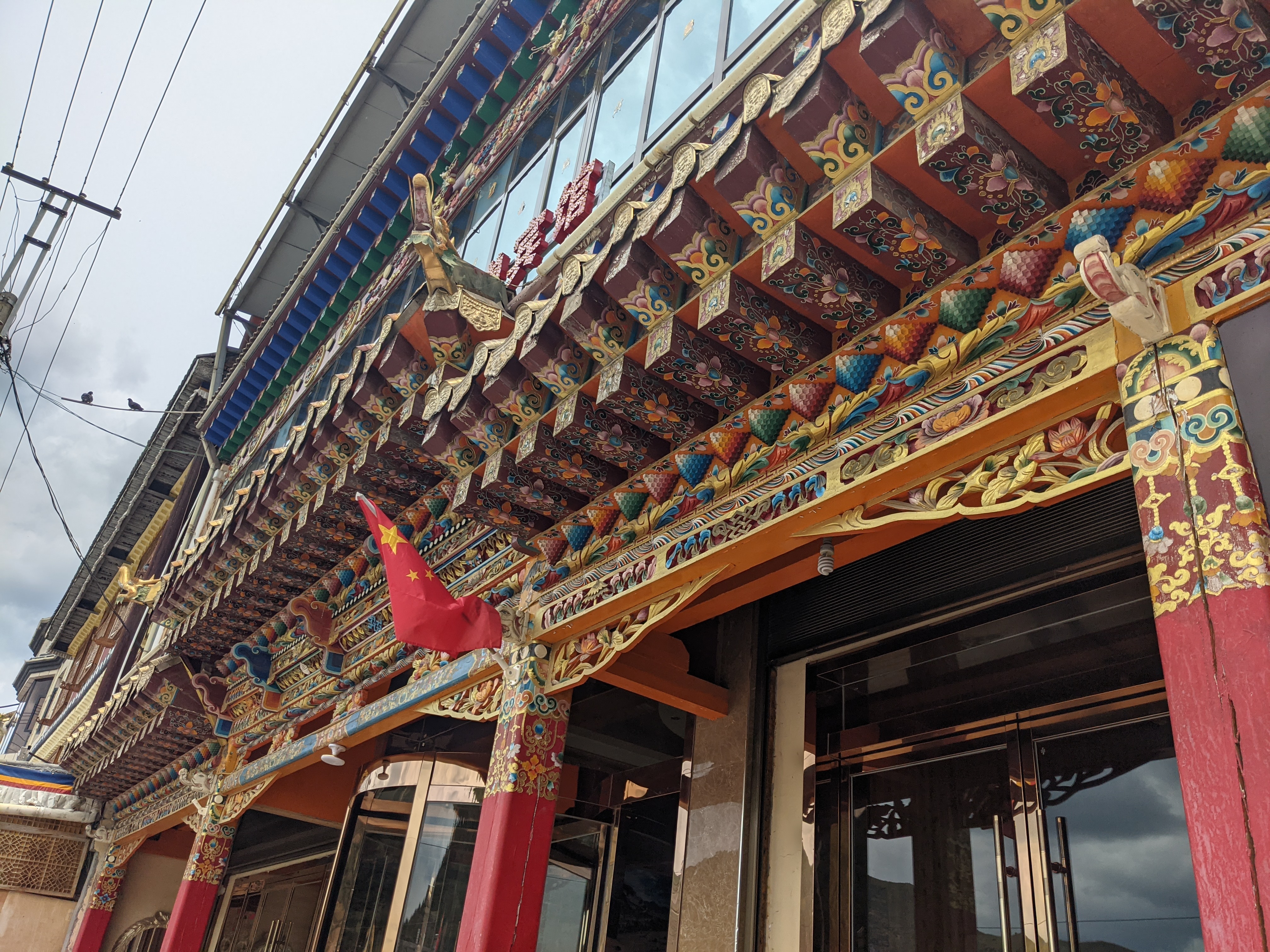
The touristy area of town has all the usual colour and flare of Tibetan Buddhism. 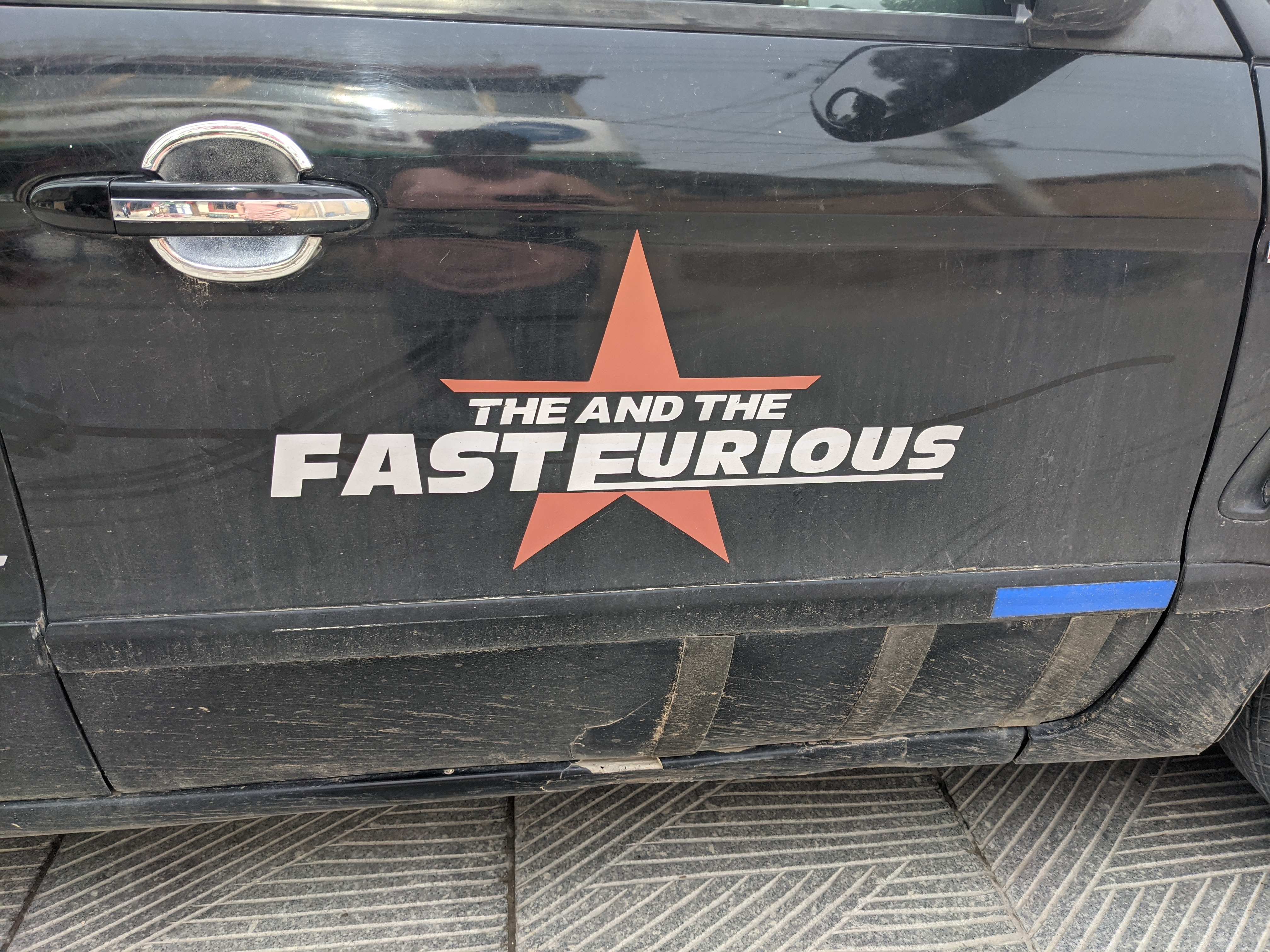
The number of times I’ve seen things like this in my 8 years living in China is higher than I can remember
Labrang Monestary was established in 1709, so it isn’t as old as Kumbum monestary, but it’s still considered one of the 6 most important Gelug monestaries in the area. The Monestary itself is free to enter, but to get into most of the buildings, you need to be accompanied by a guide. There are 2 English tours per day; one at 10am and one at 3pm. The tour only costs 40rmb, so it doesn’t exactly break the bank. Our guide happened to be one of the monks living at the monestary. That gave us an excellent perspective that we couldn’t have otherwise gotten. We actualy missed the first tour though, so we walked around some of the less busy area of the monestary while we waited until the 3pm tour.
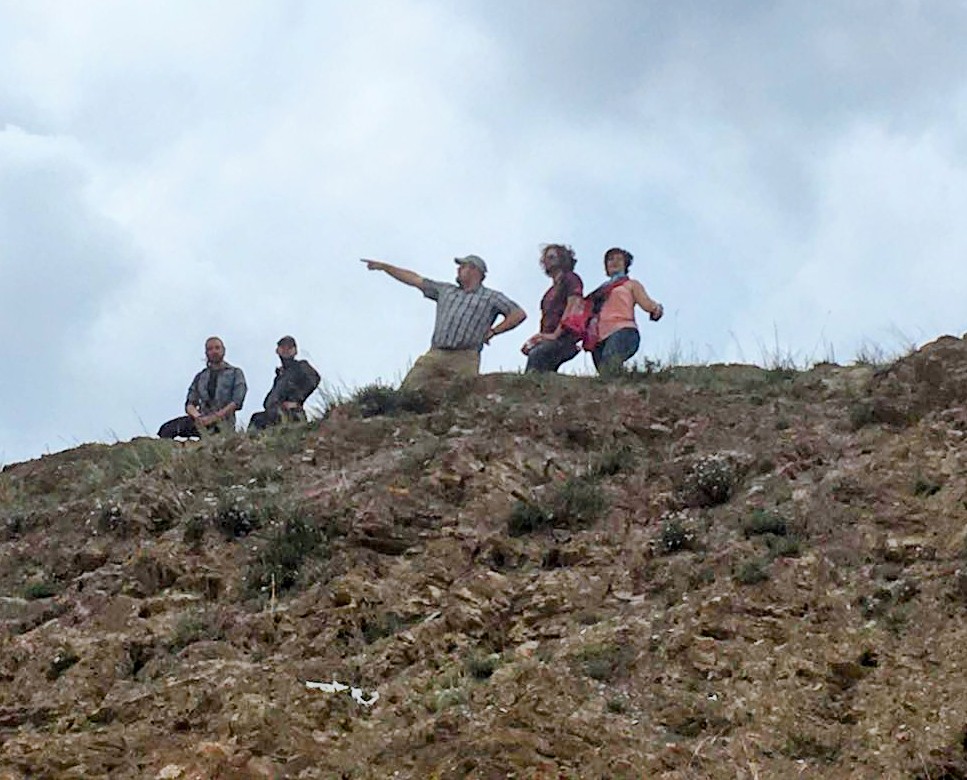
We climbed up a big hill for a better view 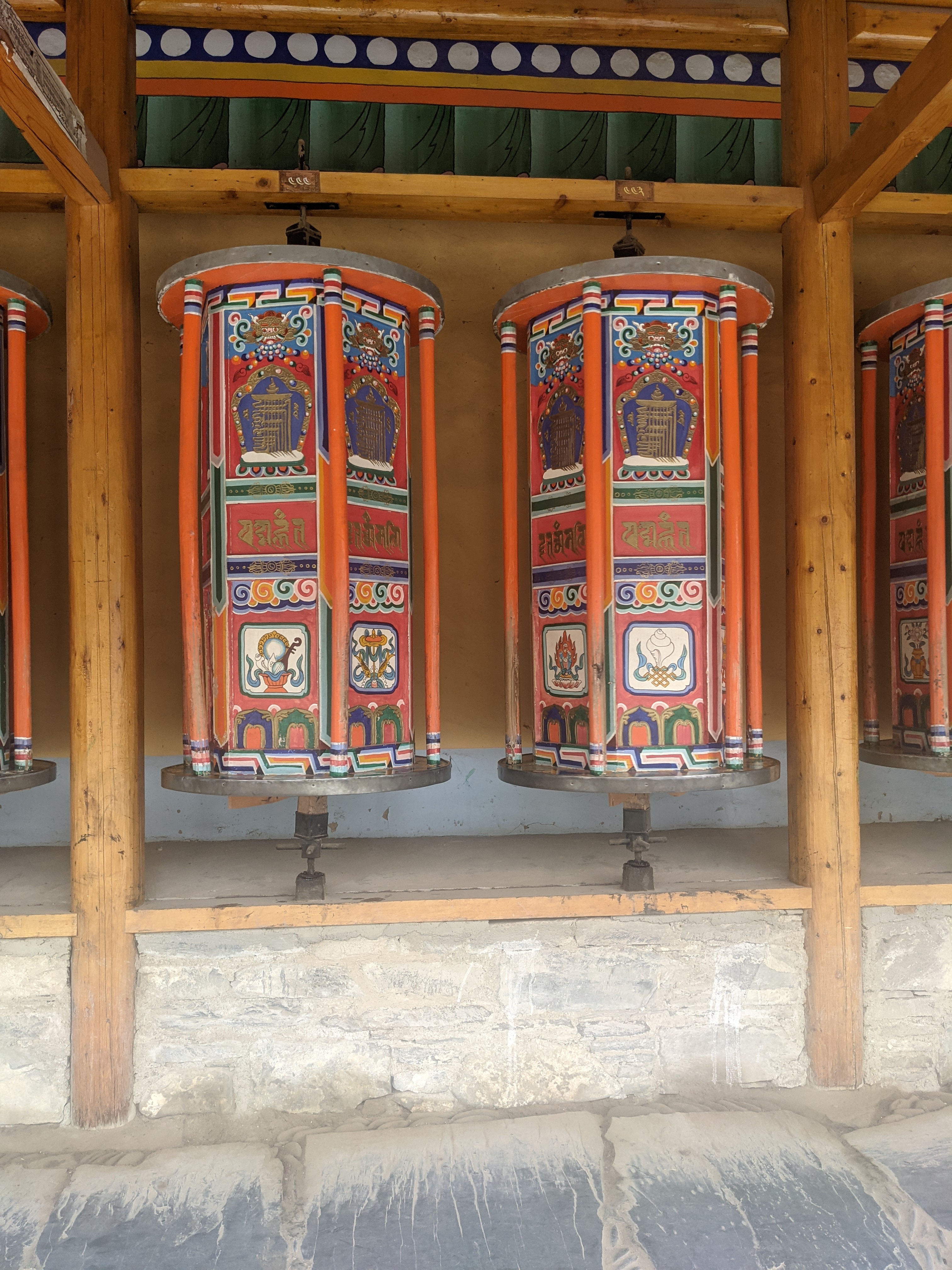
Prayer Wheels 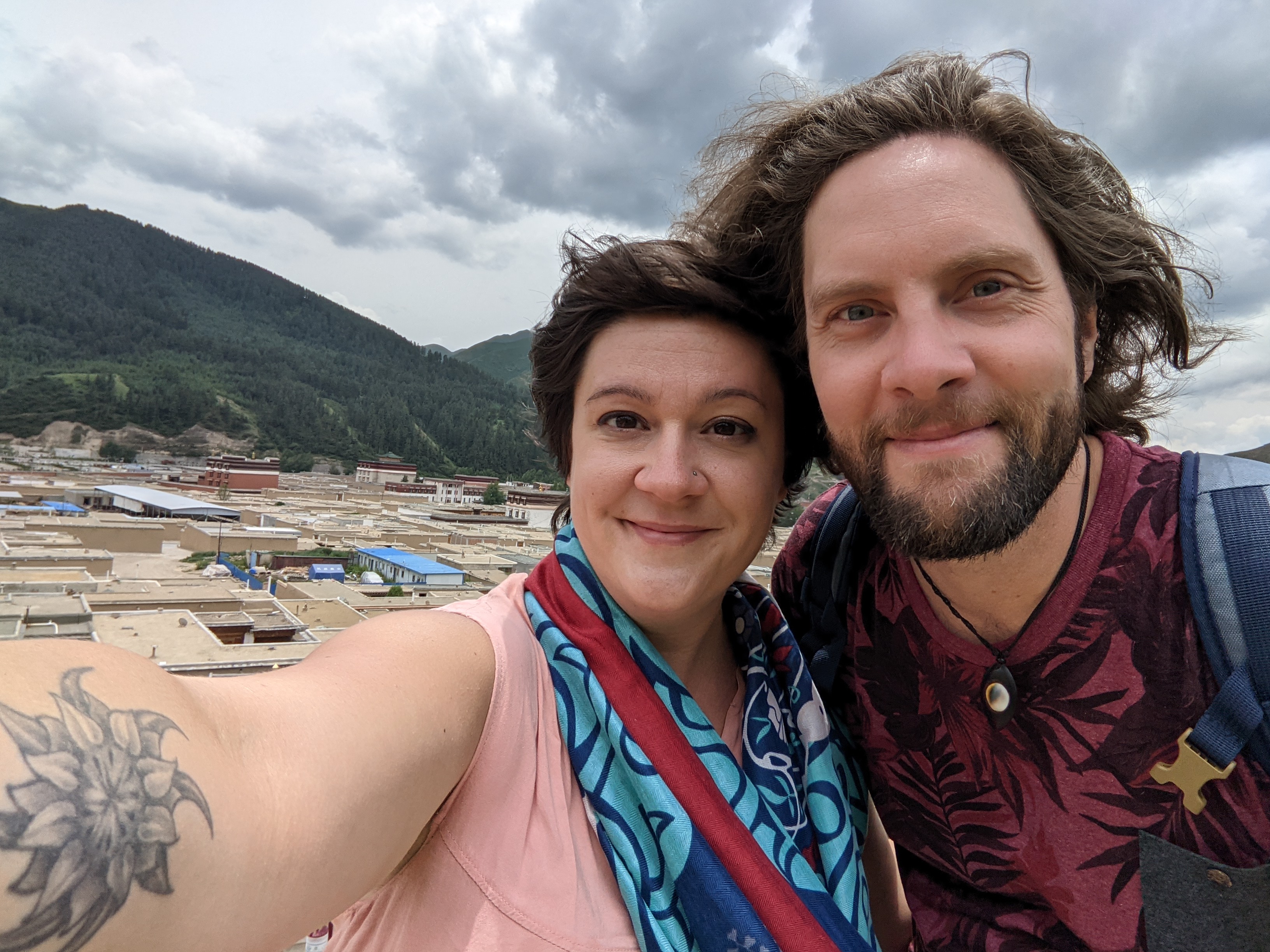
This is my favourite selfie of Dave and I so far this trip. 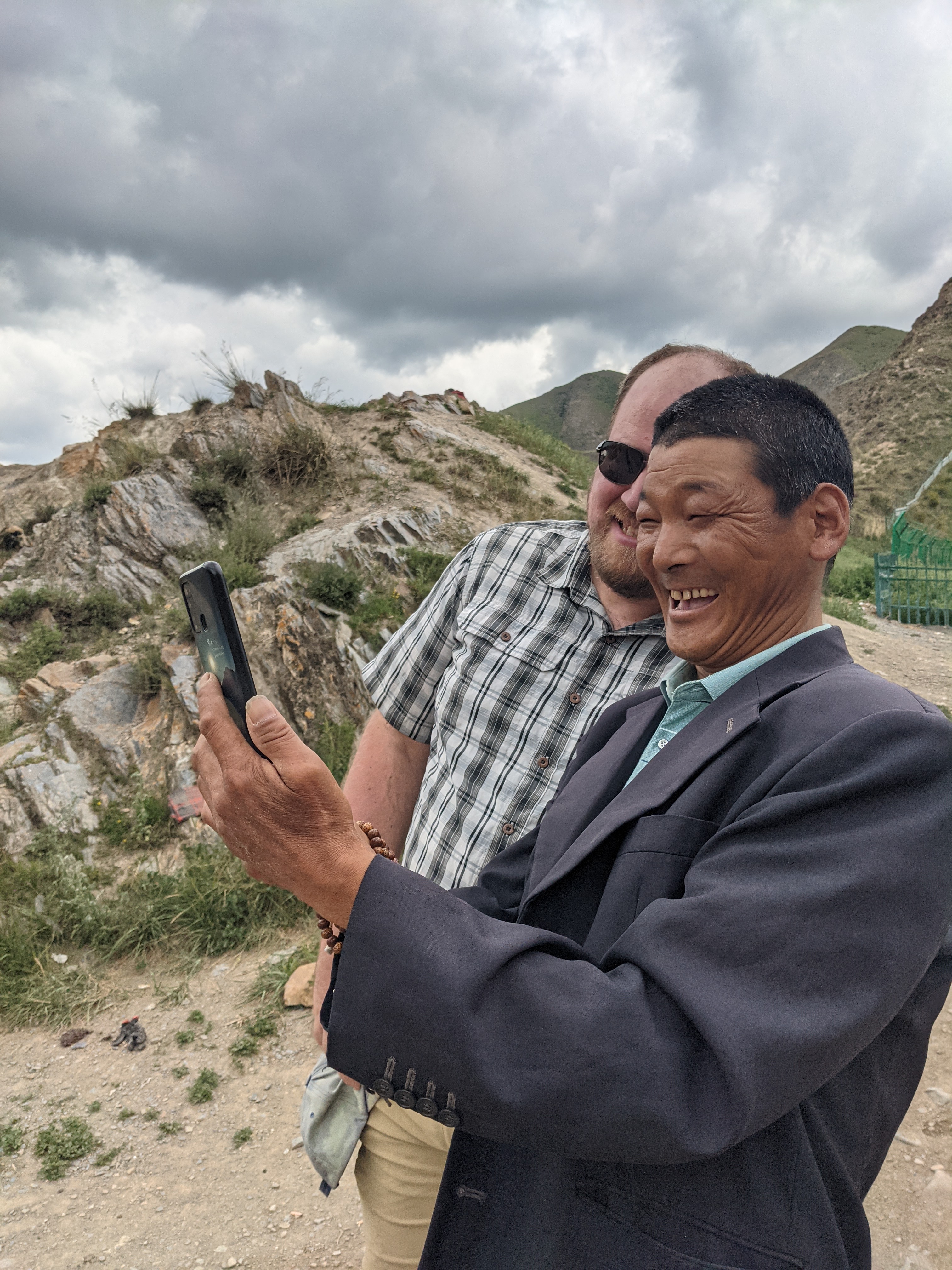
Andy made an old man’s day with that selfie.
We also made a goat friend while passing time. He was hanging out on his own, and at first we weren’t even sure if he was alive because he was so still. Turns out, he was just really relaxed!
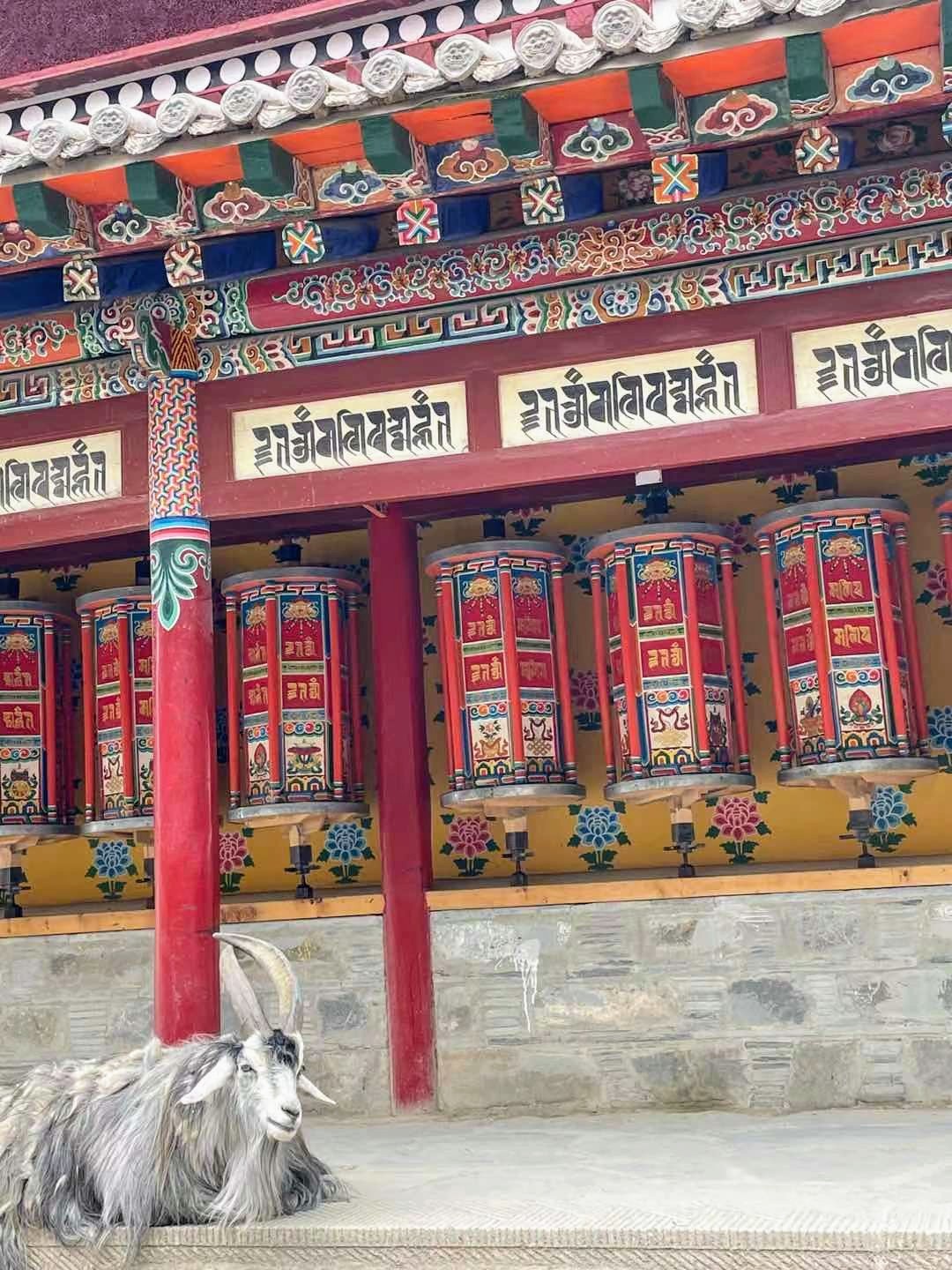
When we first spotted the goat 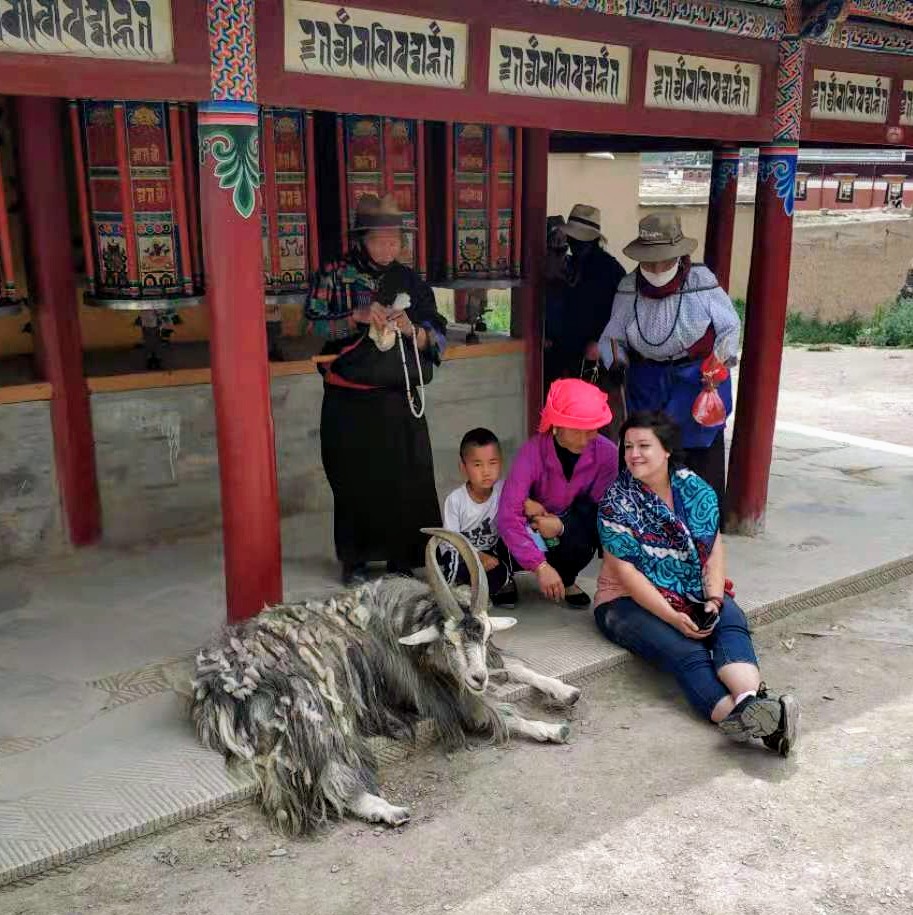
I hung around a little longer than the others (because of course I did) 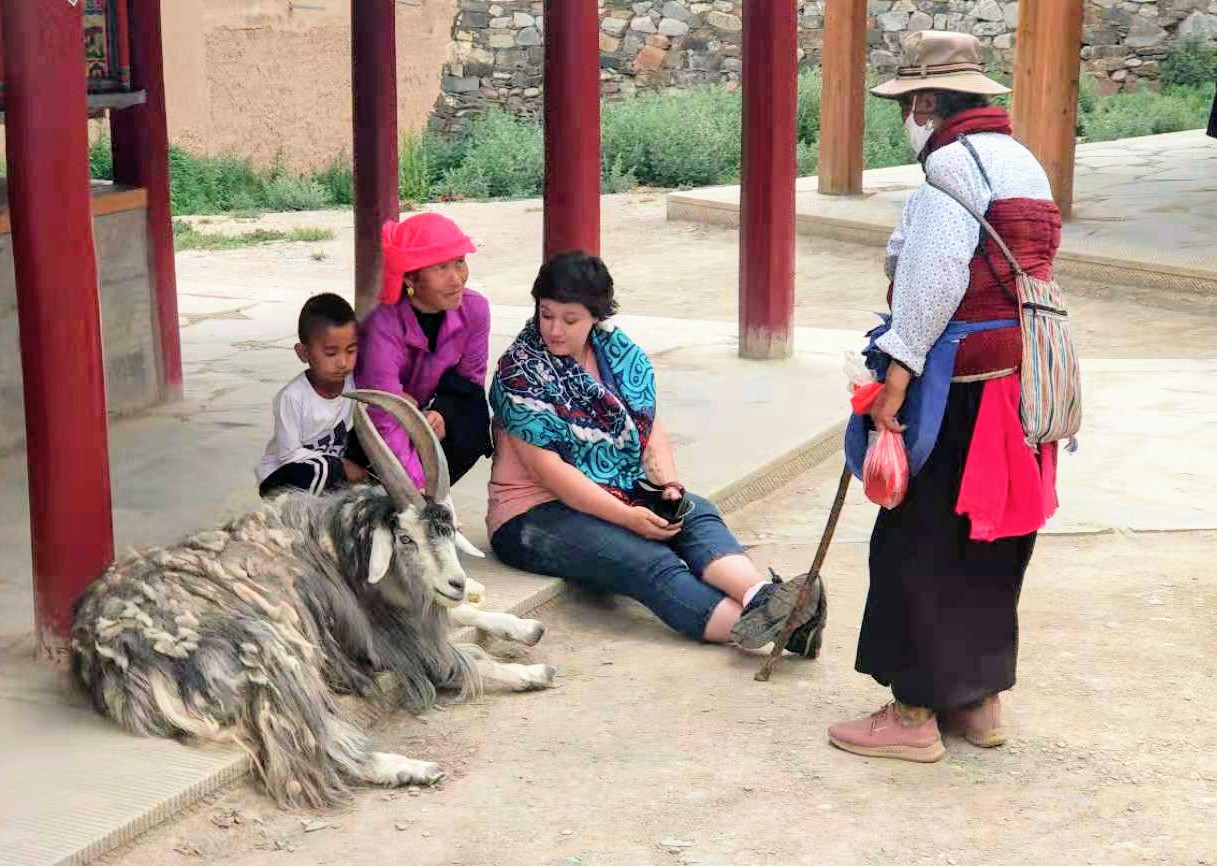
The woman with the cane REALLY wanted me to feed the goat some hard bread. She kept hitting my shoe with her cane to bully me into it. 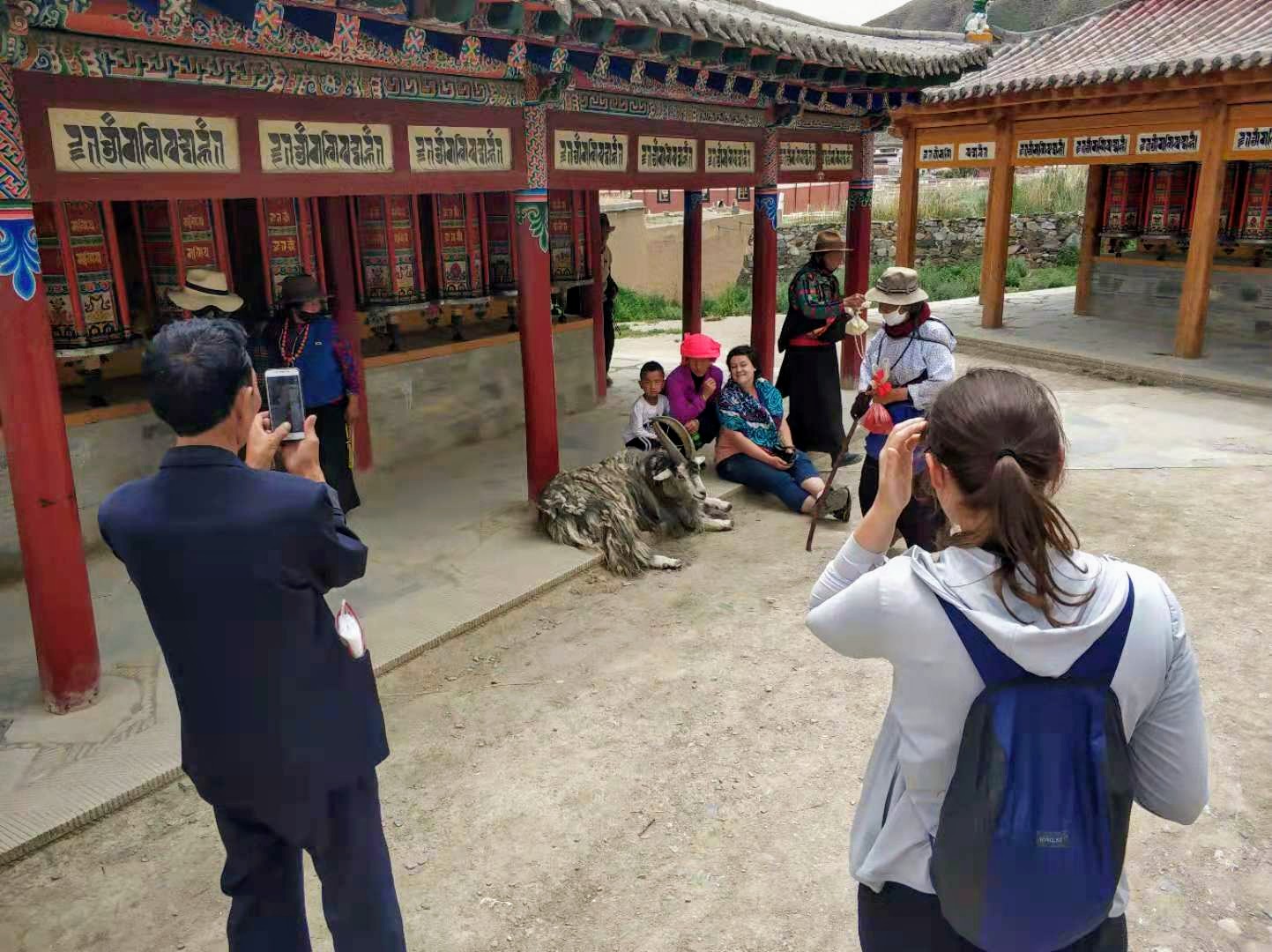
Of course, a crowd started to gather before very long. 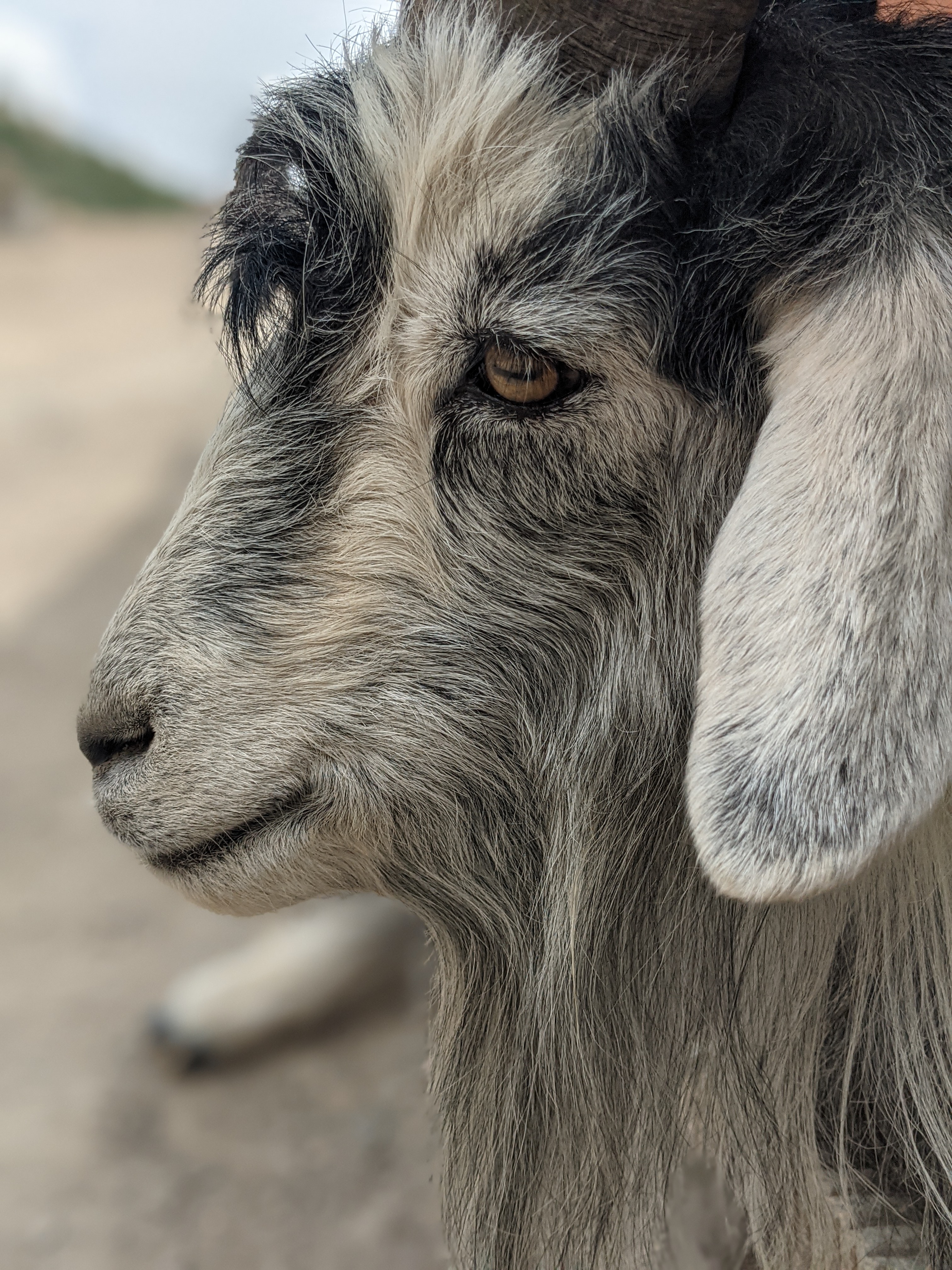
He was a pretty friendly goat.
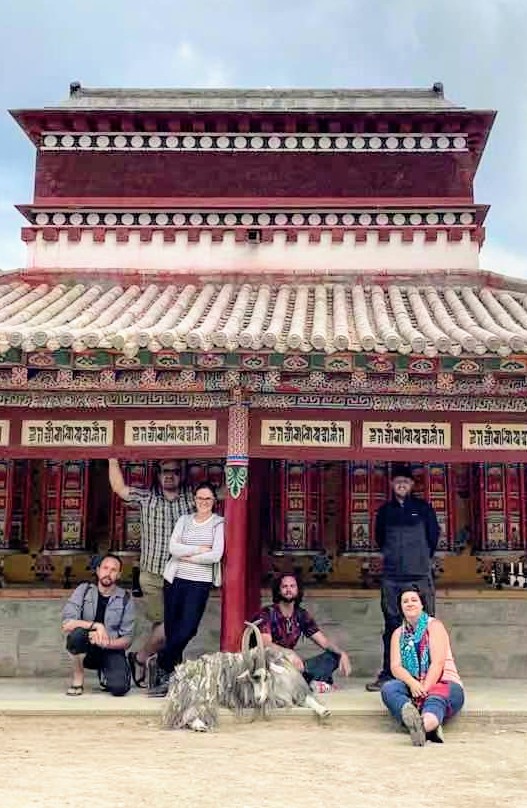
The tour of Labrang was punctuated by rain, but lovely nonetheless. The monk who showed us around has lived at the monestary for nearly 20 years, since he was 18 years old. I don’t think he was expecting so many personal questions, but he answered them as they came. He explained that he became a monk because his uncle was a monk and it had inspired him. Of the six colleges that monks can choose to study, he chose to study philosophy. Once more, it was his uncle who inspired him.
We also learned a lot about Buddhism. One thing I found particularly interesting was that in Tibetan Buddhism, monks only get one chance to be a monk. In other sects, people can be monks, leave the monestary later on, and rejoin the monastery again later in life. Tibetans only get 1 chance per lifetime.
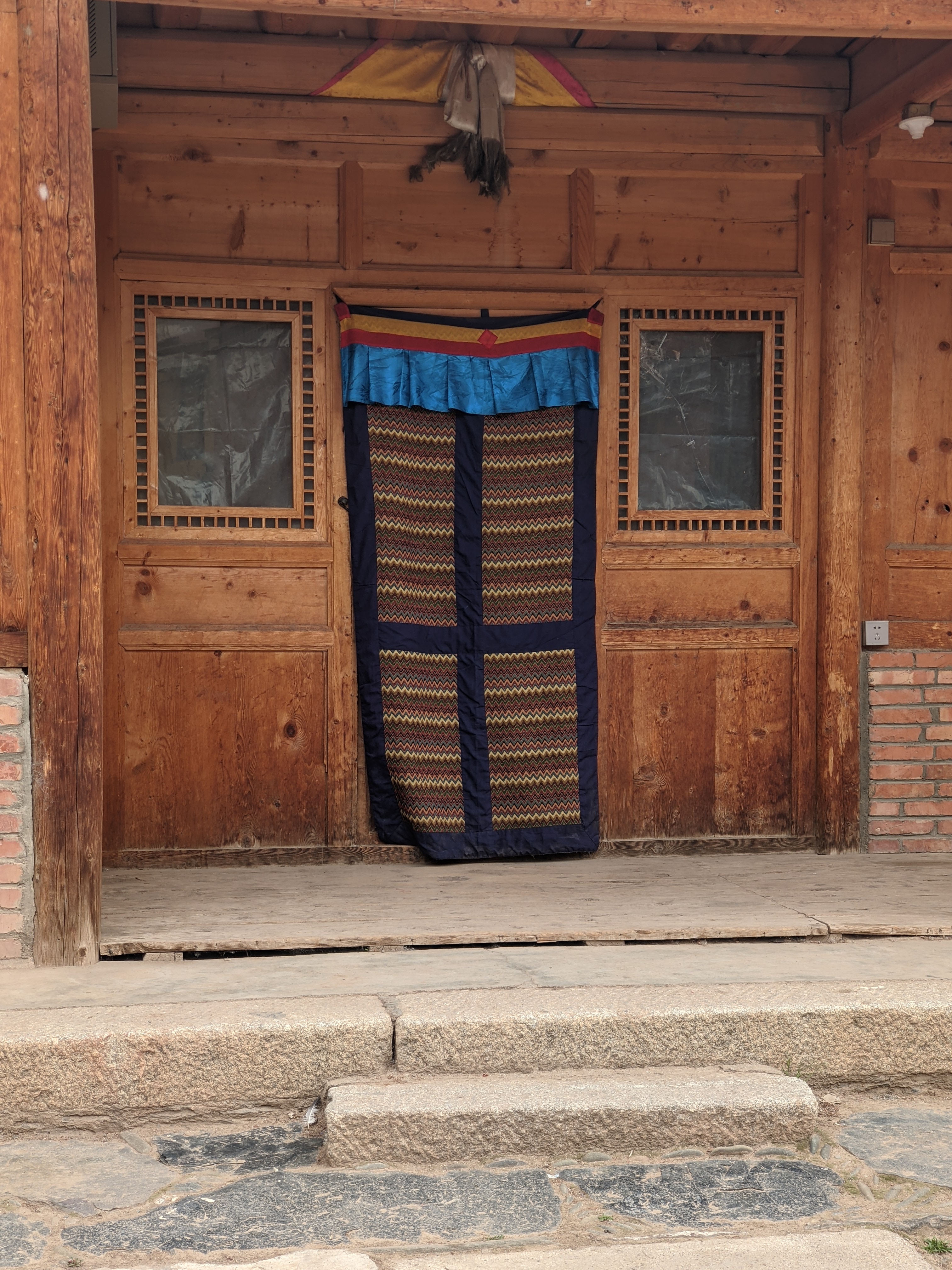
One of the things that surprised us all was that monks at the monestary actually have a lot of freedom. They can choose one of the 6 colleges to study, and can only study one at a time. There are lessons, debates and prayers within each of the colleges, but the monks can decide whether they want to attend. Of course, there are tests in order for that monks have to pass in order to complete their college, so it’s best if they participate as much as possible We often saw monks in town, eating dinner in regular restaurants and even shopping. This is really not what I expected, but I think it’s a lot better than them being stuck inside all the time.
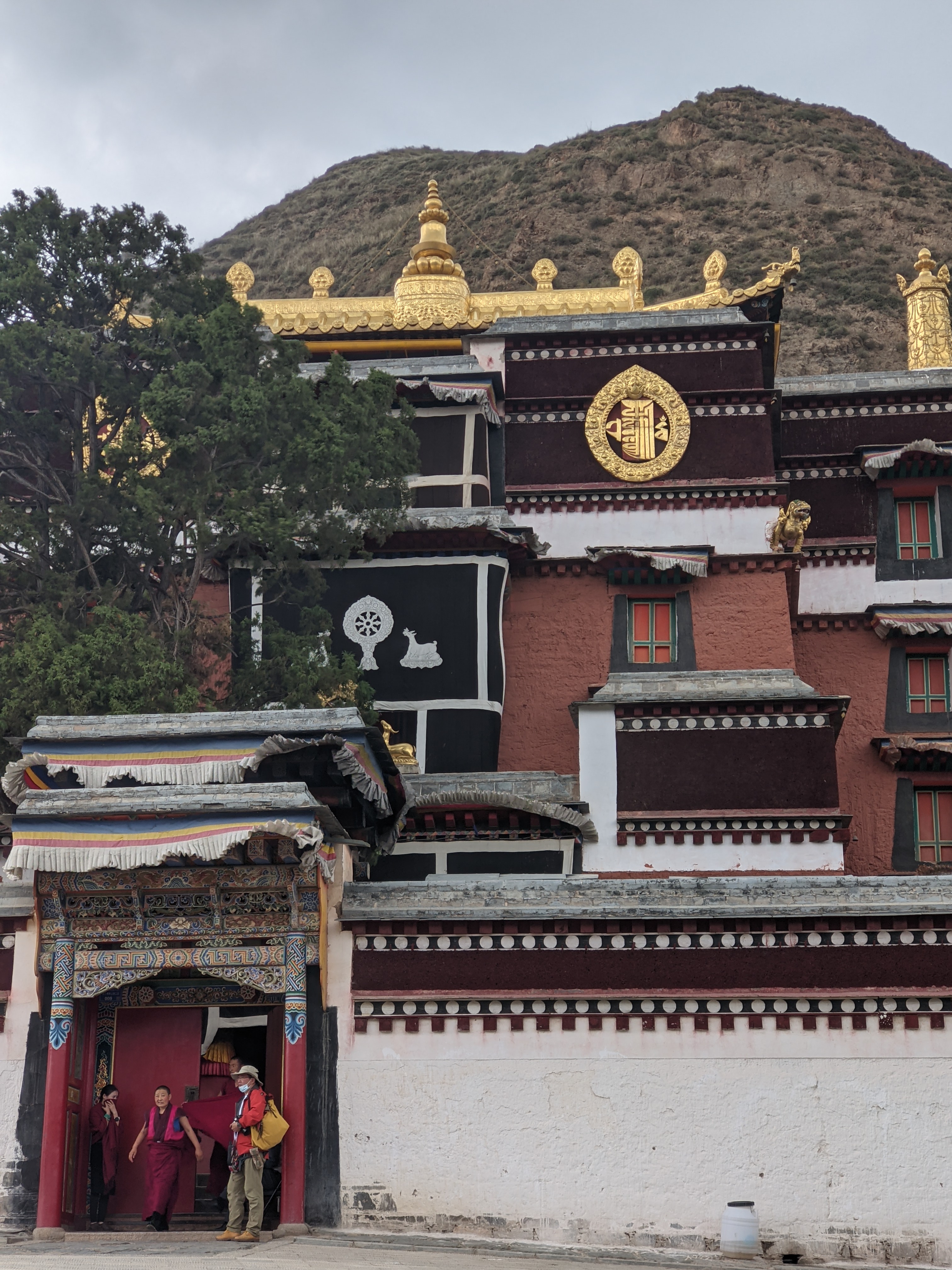
Of course, the highlight of our trip to Labrang monestary was the yak butter sculpturs. Yak butter is an important part of monestary life. You smell it everywhere you go. Their candles in the temples are made of it, and the sculptures in both Kumbum and Labrang are a major draw for tourism (and likely also a good source of donations). We were allowed to have cameras in that building, so I got pictures of nearly every piece of artwork that there is to see.
Each year, new scultures are made. It takes weeks of work, and several monks, but the end result is really pretty amaing! The ones we saw are over 6 months old and amazingly still well preserved. The room they are in is refridgerated to keep the sculptures intact, and when the artists are creating their masterpieces, they have to routinely put their hands in cold water to prevent the butter from melting too much while they work with it.
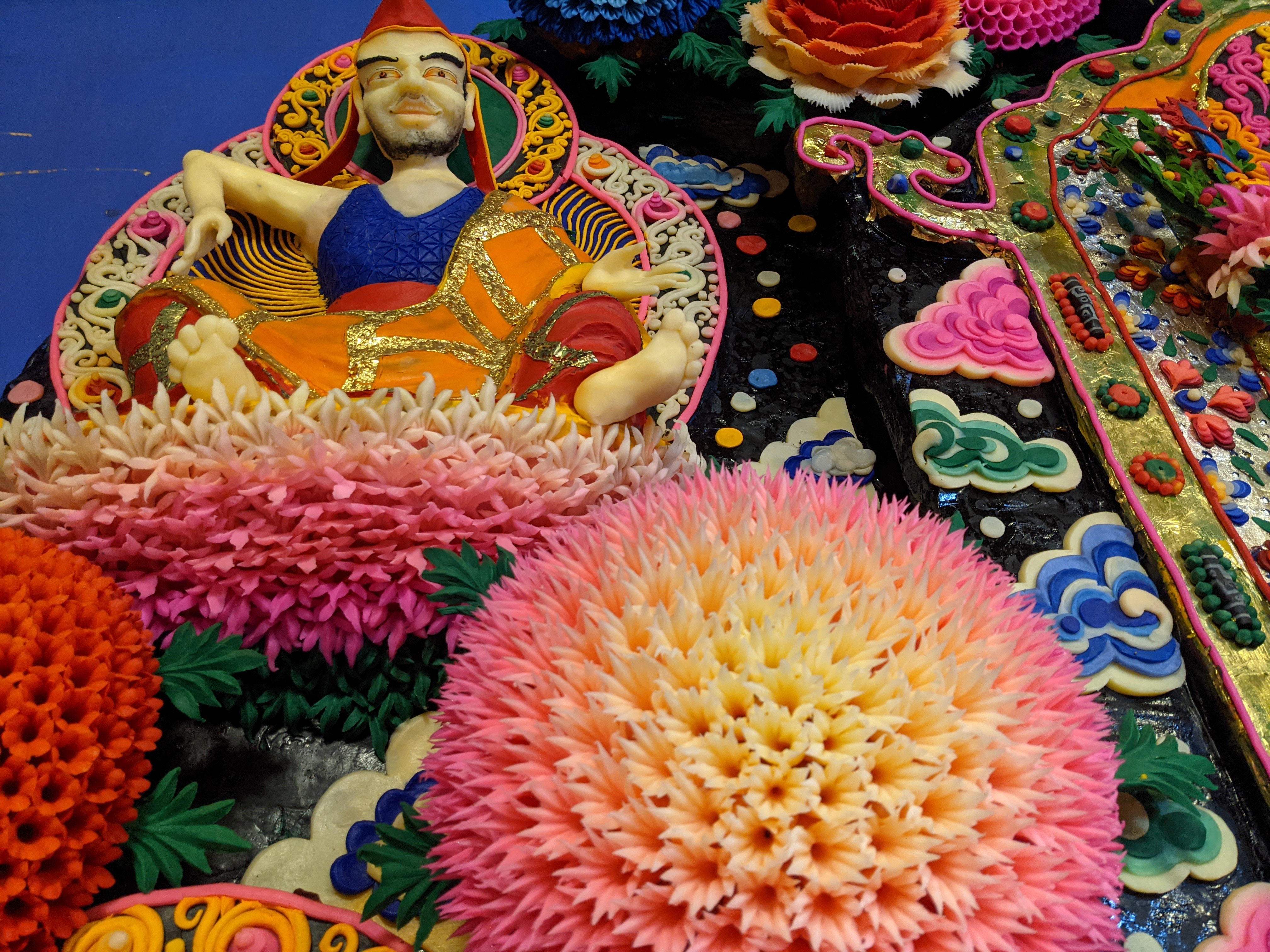
Our time in Lebrang was really very nice. It was cool to get the perspective of a monk. He tried his best to anwer our questions, and I probably got more out of this visit, than I did at Kumbum monestary, where we walked around on our own. I gained respect for the Buddhist religion when I learned that they debate new ideas, and that their beliefs evolve over time, based on these new ideas. Of course, I still have a lot of difficulty subscribing to the idea of reincarnation. The idea that Donald Trump, Jeff Bezos and other powerful people are in their positions because they were so ‘good’ in previous lives is hard for me to believe. Did all that goodness lead them to positions where they can take advantage of others and generally make the world a worse place? Is that how it should work? I do like the idea of Trump coming back as a dung beatle, I’m not going to lie, but I still struggle with the other side of it.
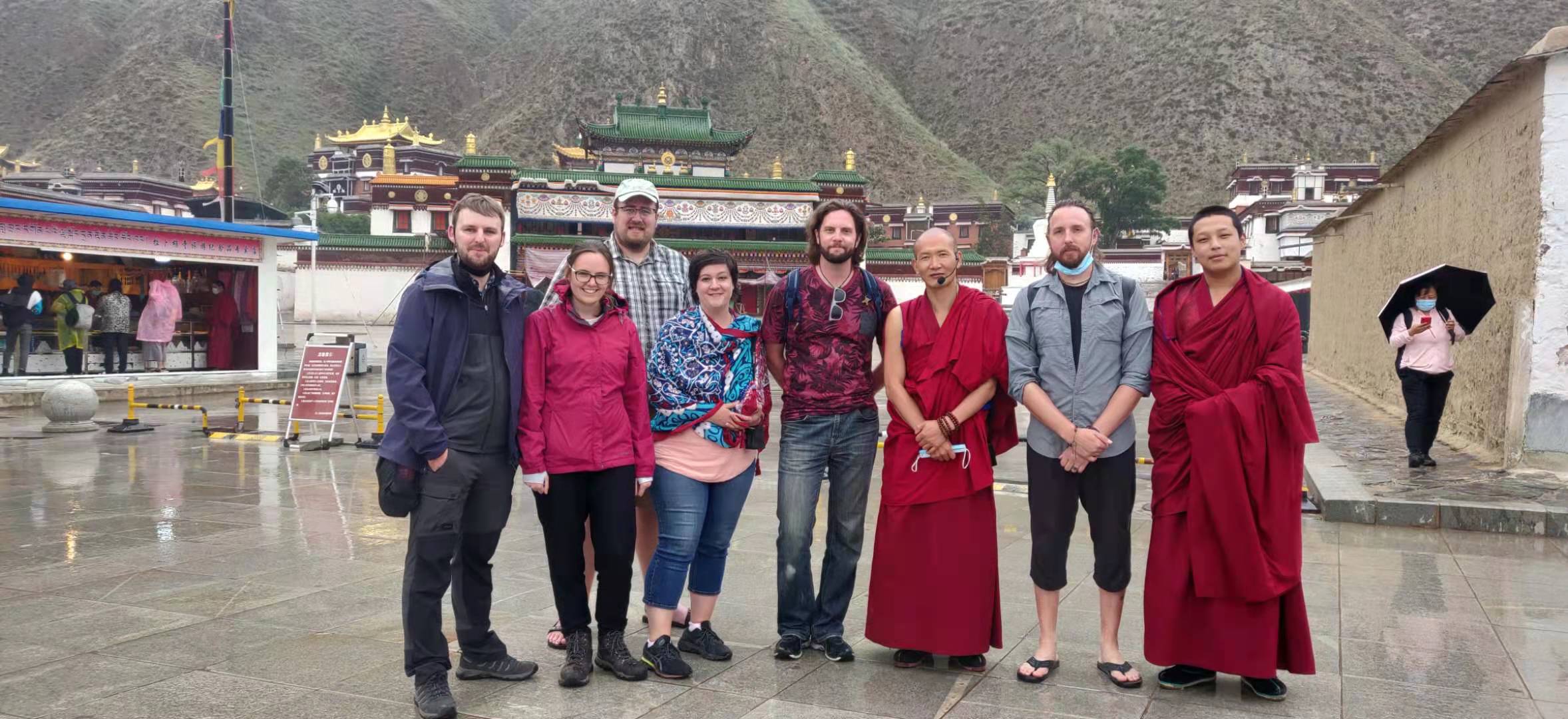
Next up, I will be writing about the various forms of transportation that we have taken, and the beautiful views that we’ve appreciated along the way! Stay tuned!
